mark-carlile.com | home
December 7:
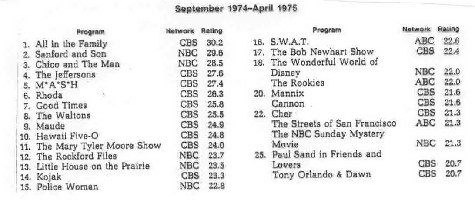
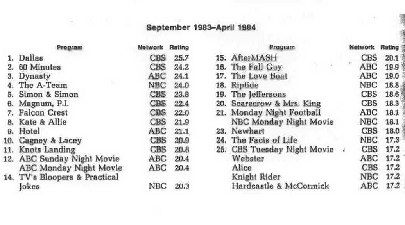
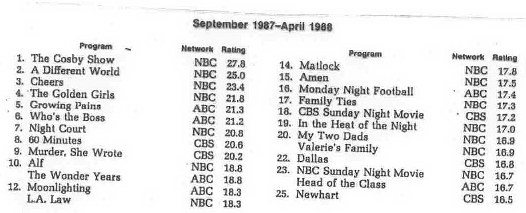
changing trends in popular television in the 70s and 80s
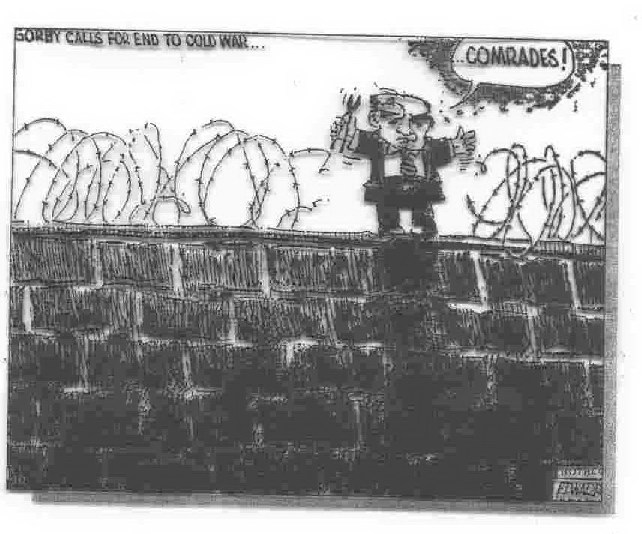
the fall of the Berlin Wall hastened the end of the Cold War
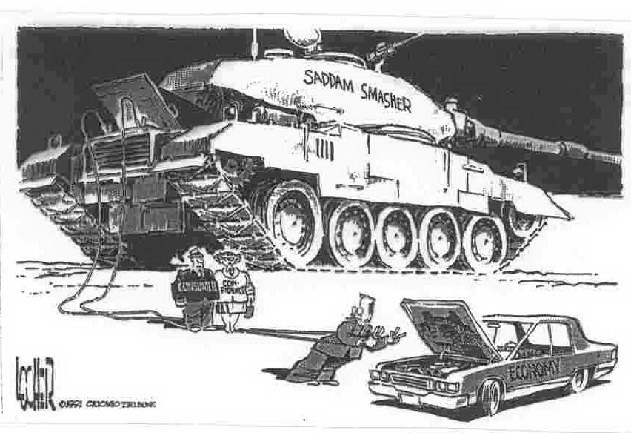
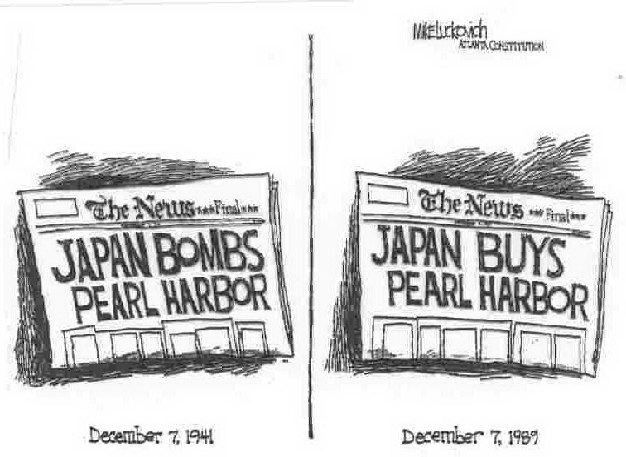
military success in Iraq did not translate to a successful economy at home, and Americans worried that the nation was losing its status as an economic superpower
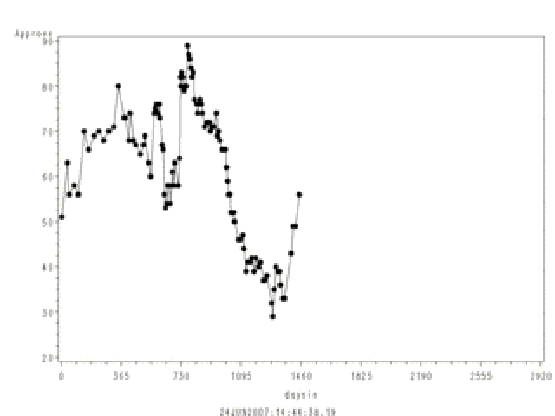
a graph of George H. W. Bush's presidential approval ratings
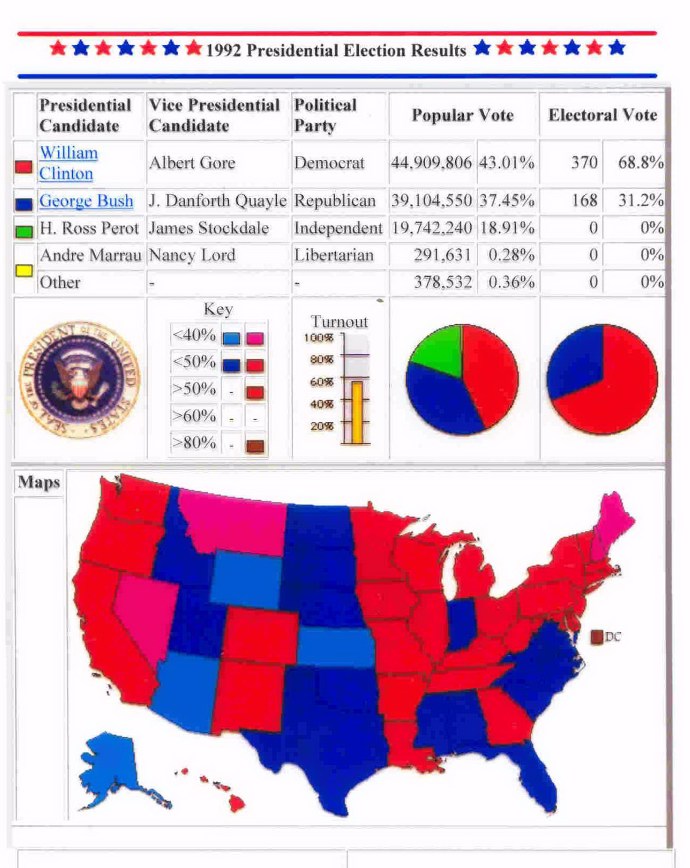
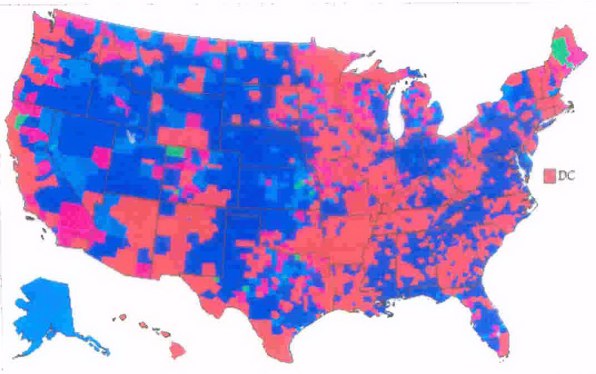
the 1992 election, and the county-by-county results (Clinton counties in red, Bush counties in blue, Perot counties in green)
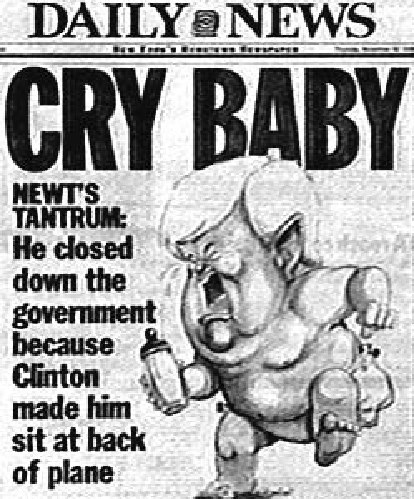
after the Republican takeover of Congress in 1994, Clinton "won" the public relations struggle with Speaker Newt Gingrich
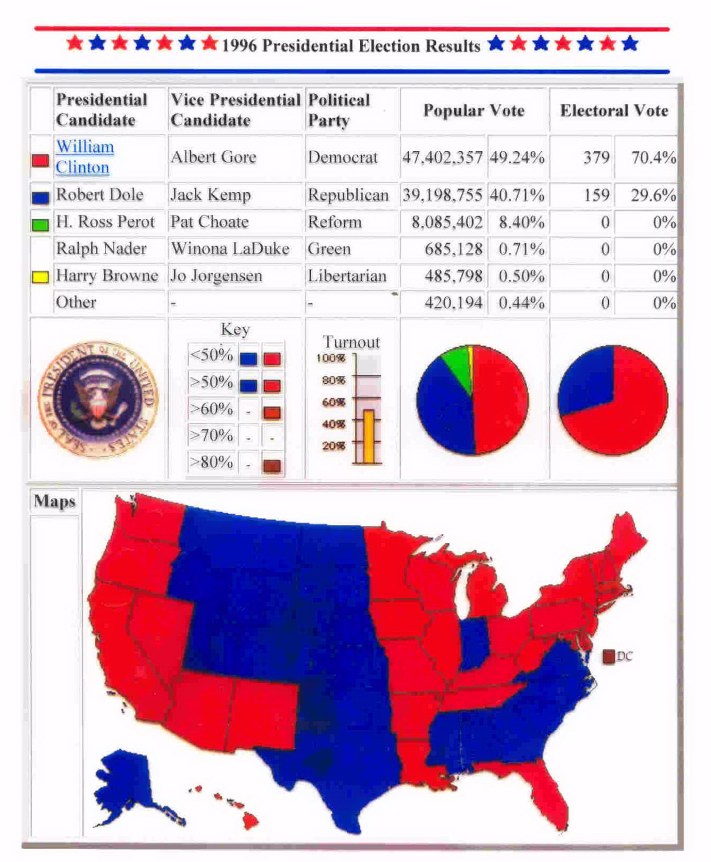
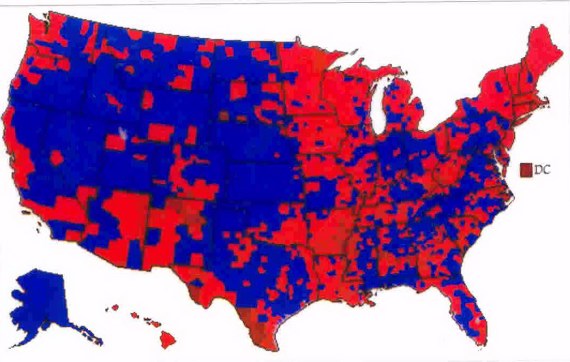
the 1996 election, and the county-by-county results (Clinton counties in red, Dole counties in blue)
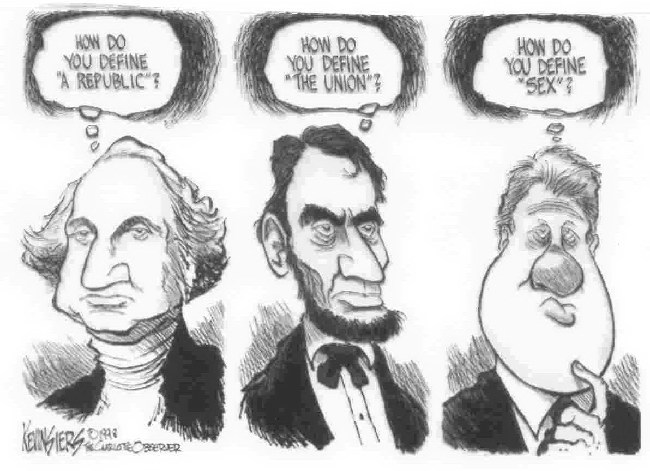
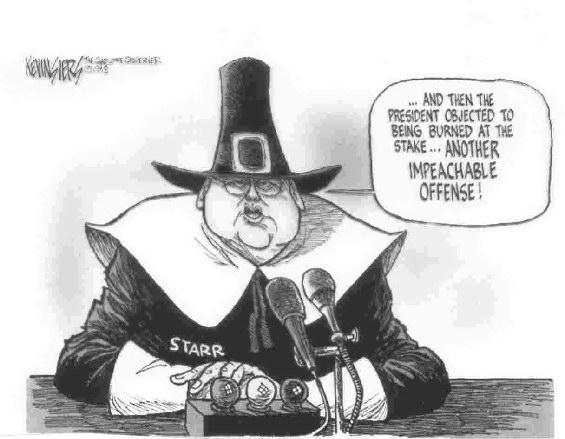
during the Lewinsky scandal, many Americans ridiculed both Clinton's defense of his behavior, and Kenneth Starr's concentration on lurid details
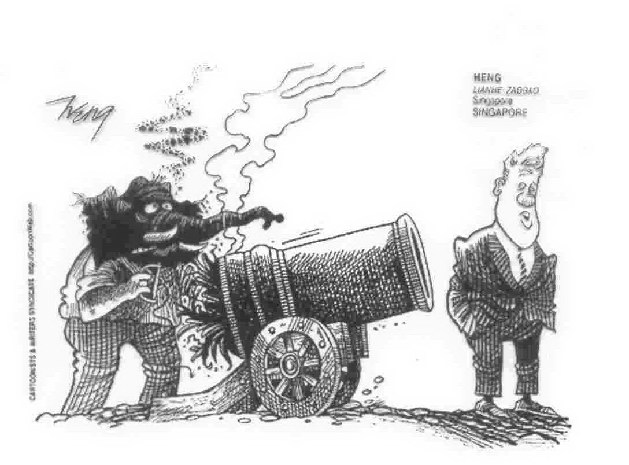
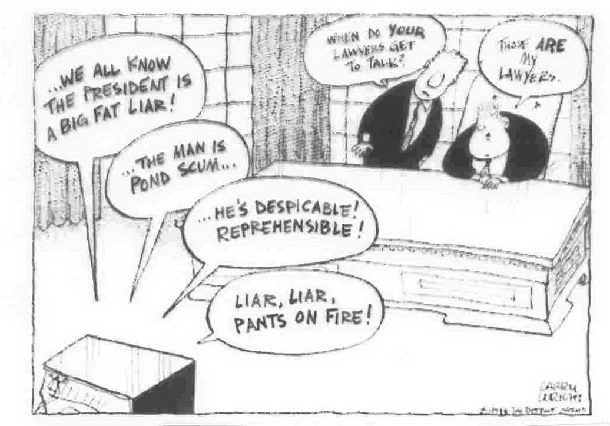
impeachment appeared to backfire on Congressional Republicans, though Clinton's personal conduct received bipartisan criticism

a graph of Clinton's presidential approval ratings
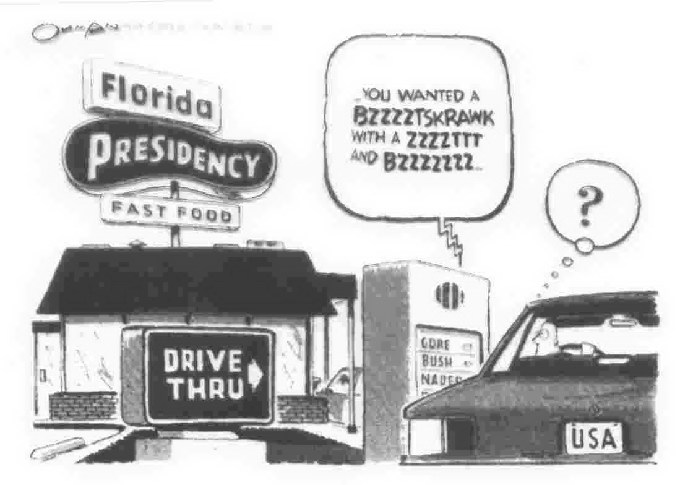
the decisive Florida vote in 2000 was close and confusing
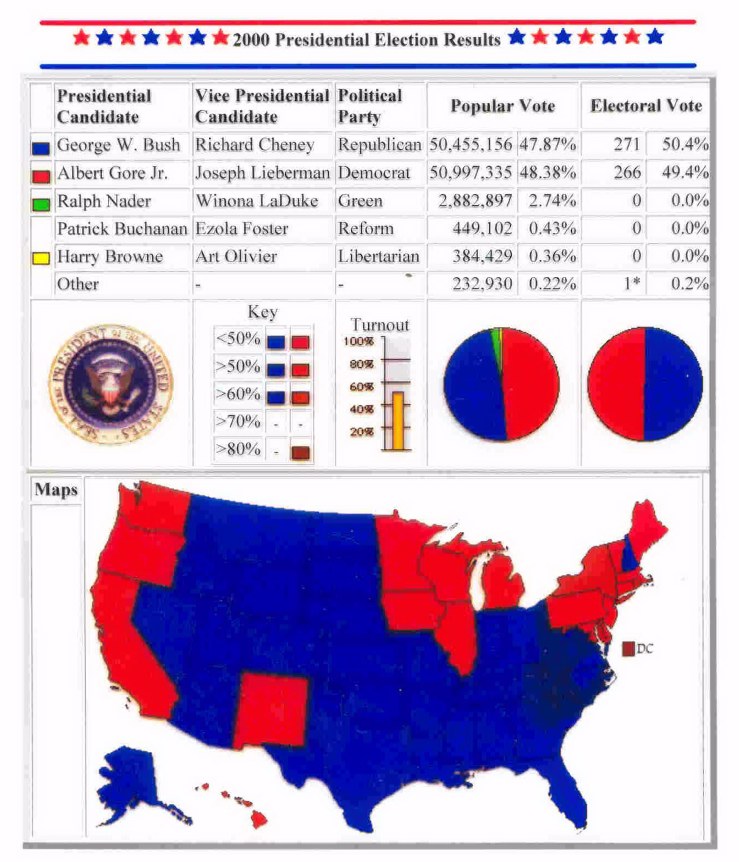
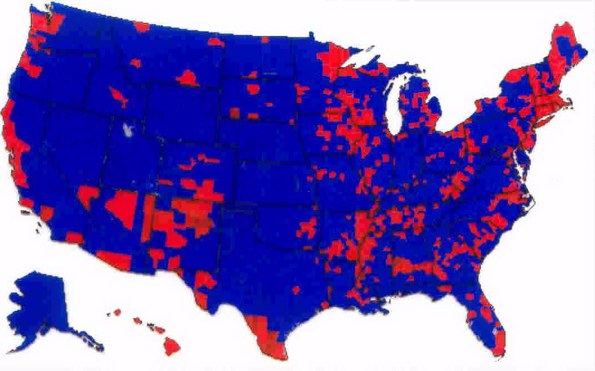
the 2000 election, and the county-by-county results (Gore counties in red, Bush counties in blue)
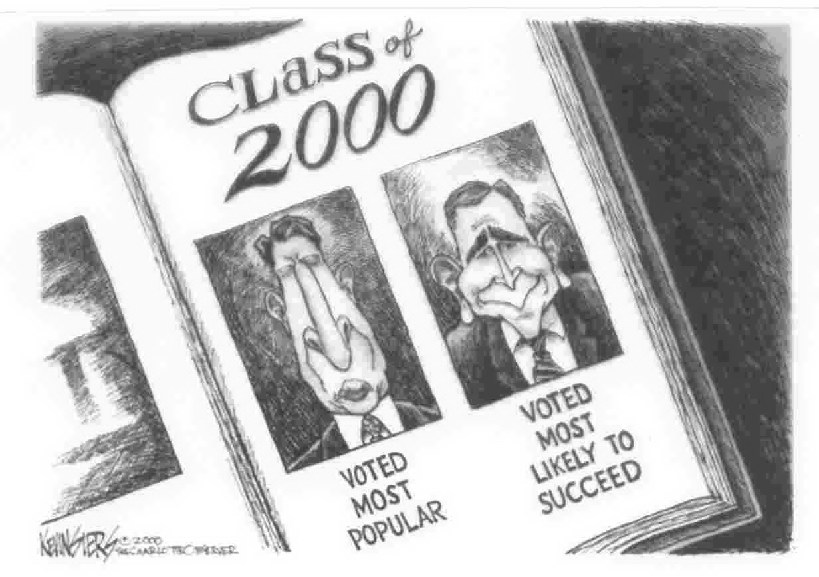
Gore won the national popular vote, but Bush won the electoral vote and the presidency
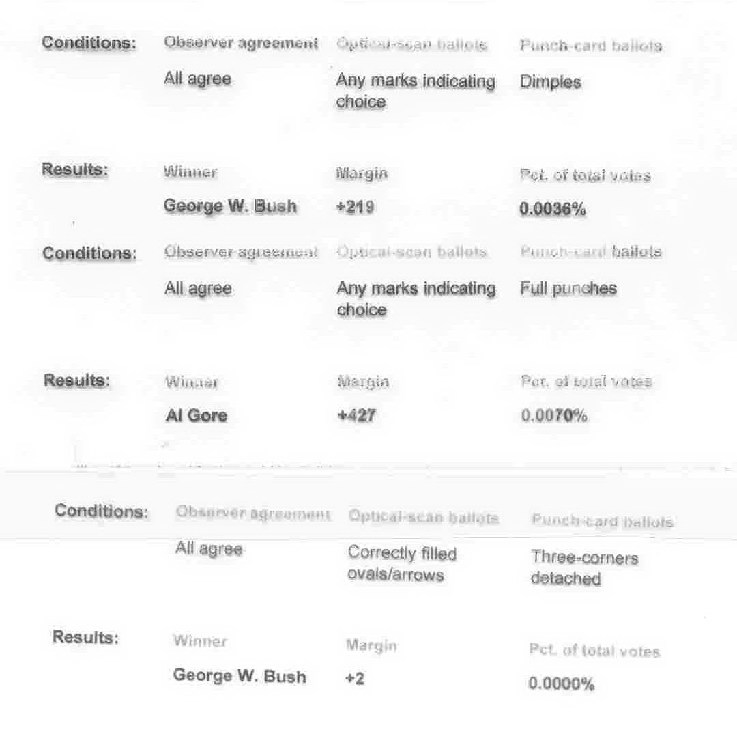
post-election media recounts showed different Florida results depending on which conditions were applied
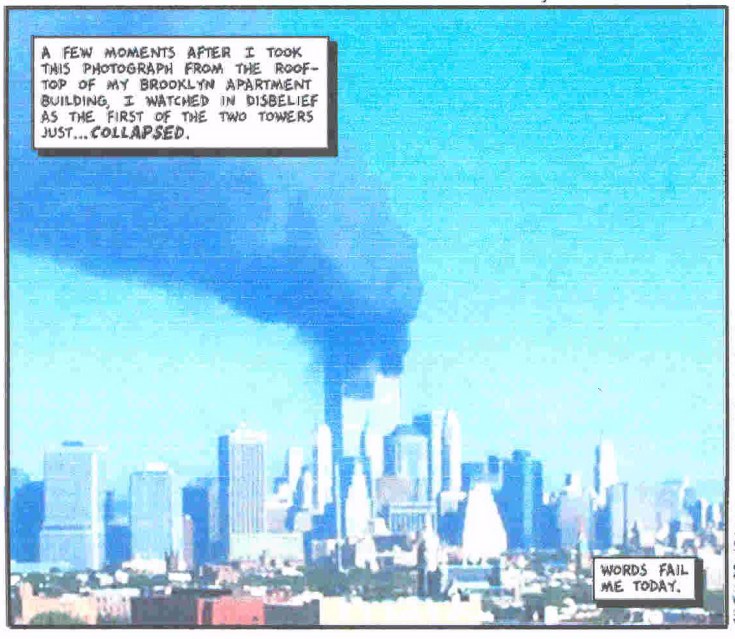
September 11, 2001
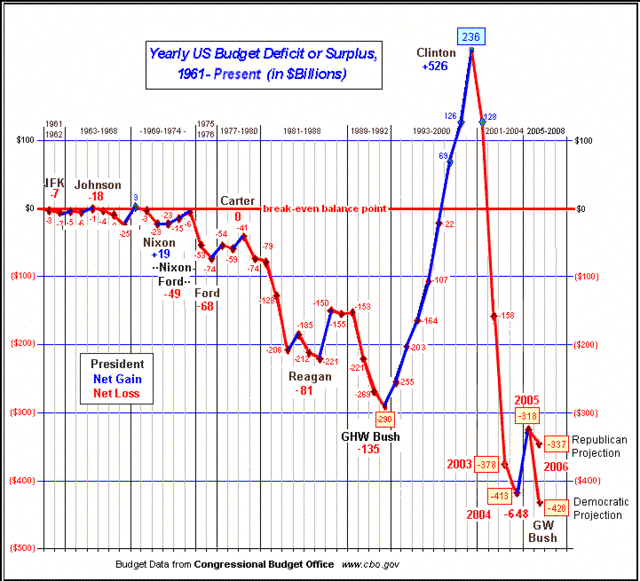
the federal budget deficit, from 1961 to the mid 00s

the "Mission Accomplished" banner that haunted much of George W. Bush's presidency
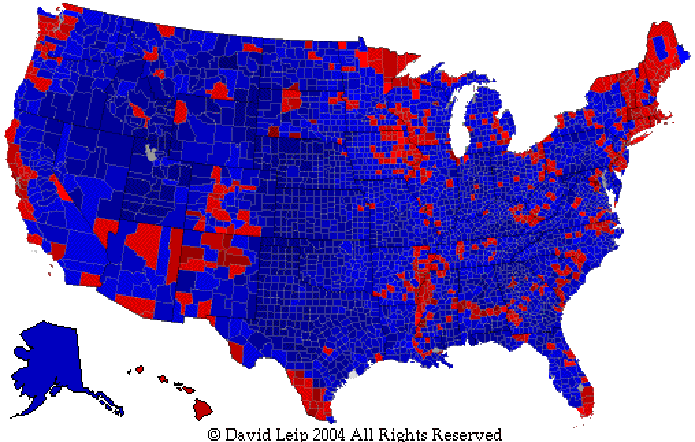
county-by-county results from the 2004 election (Kerry counties in red, Bush counties in blue)
FULL 2004 ELECTION CHARTS CAN BE FOUND AT uselectionatalas.org
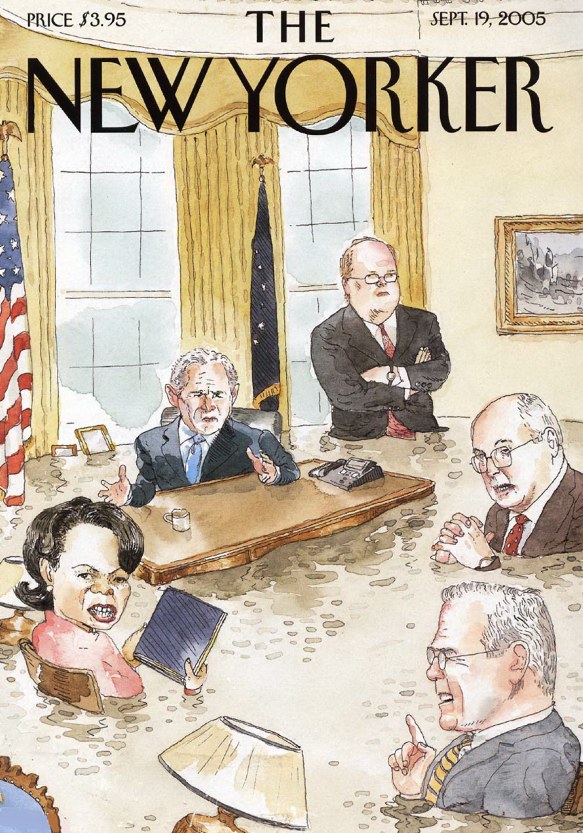
the federal response to Hurricane Katrina further damaged Bush's approval ratings
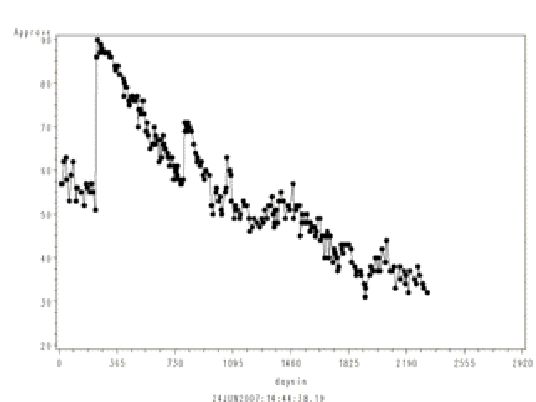
a graph of George W. Bush's presidential approval ratings
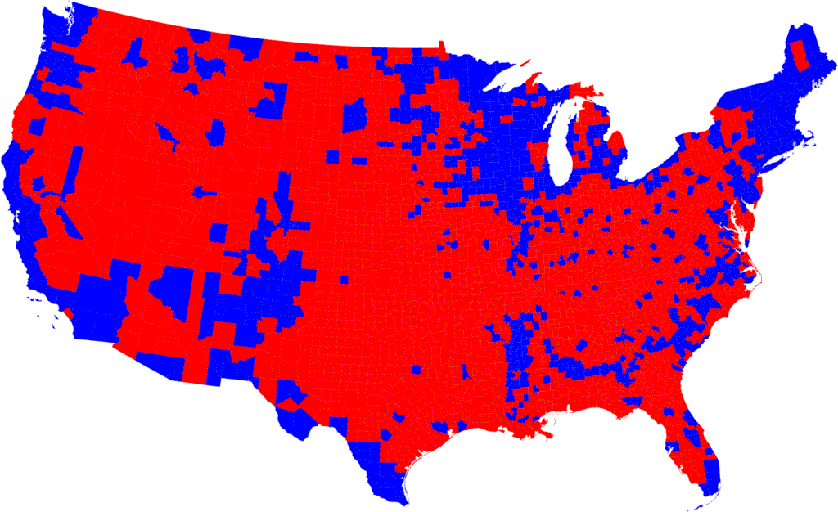
the county-by-county returns for the 2008 election (Obama counties in BLUE, McCain counties in RED)
FULL 2008 ELECTION CHARTS CAN BE FOUND AT uselectionatalas.org
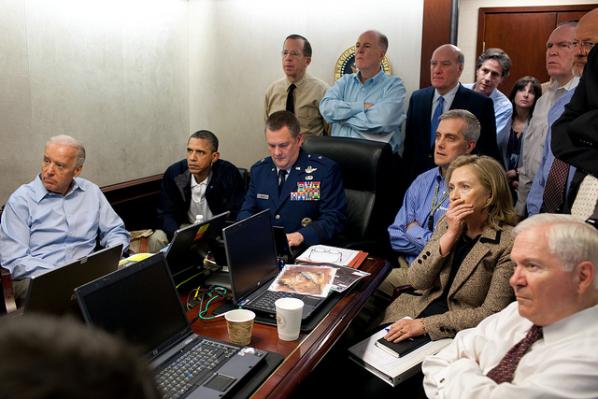
Obama and his team monitoring the Bin Laden raid, 2011
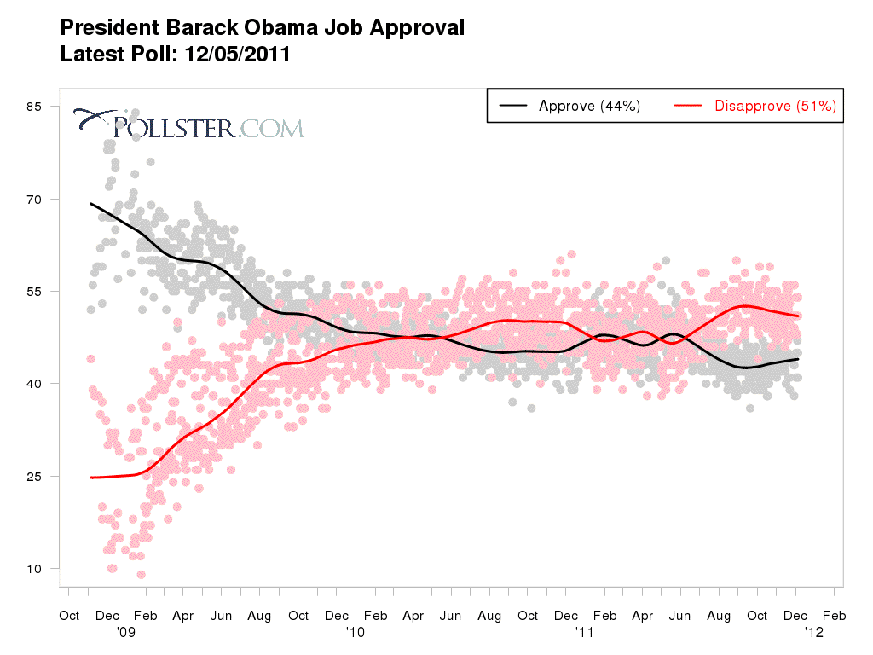
a graph of Obama's presidential approval ratings to date
November 30:

an advertisement from Reagan's movie-star days, which built upon his "good-guy" film image
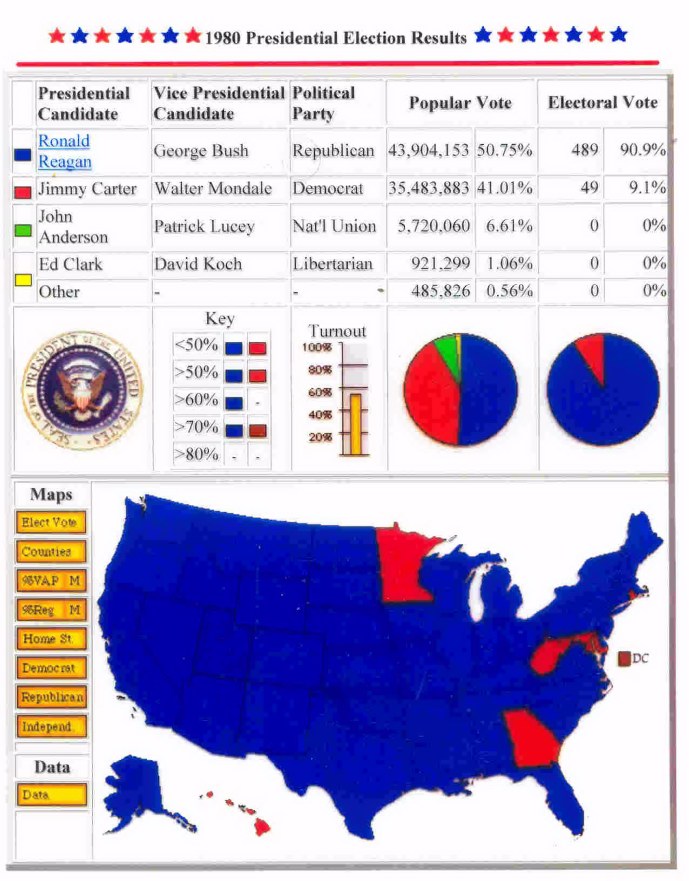
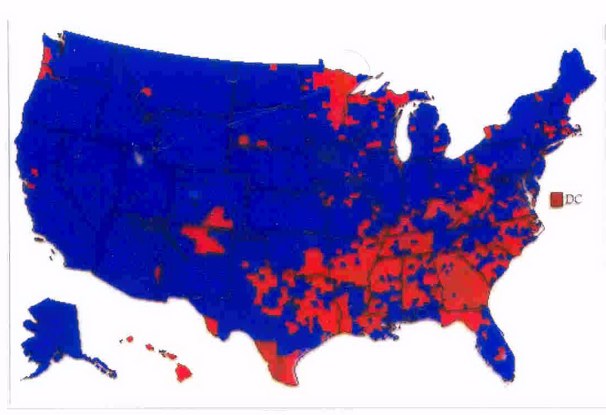
the 1980 election, and the county-by-county results (Carter counties in red, Reagan counties in blue)
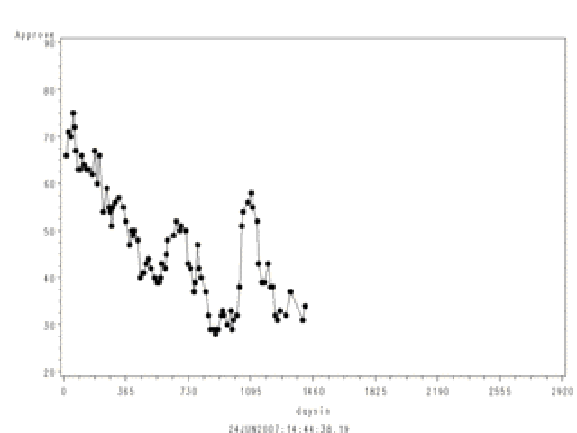
a graph of Carter's approval ratings as president
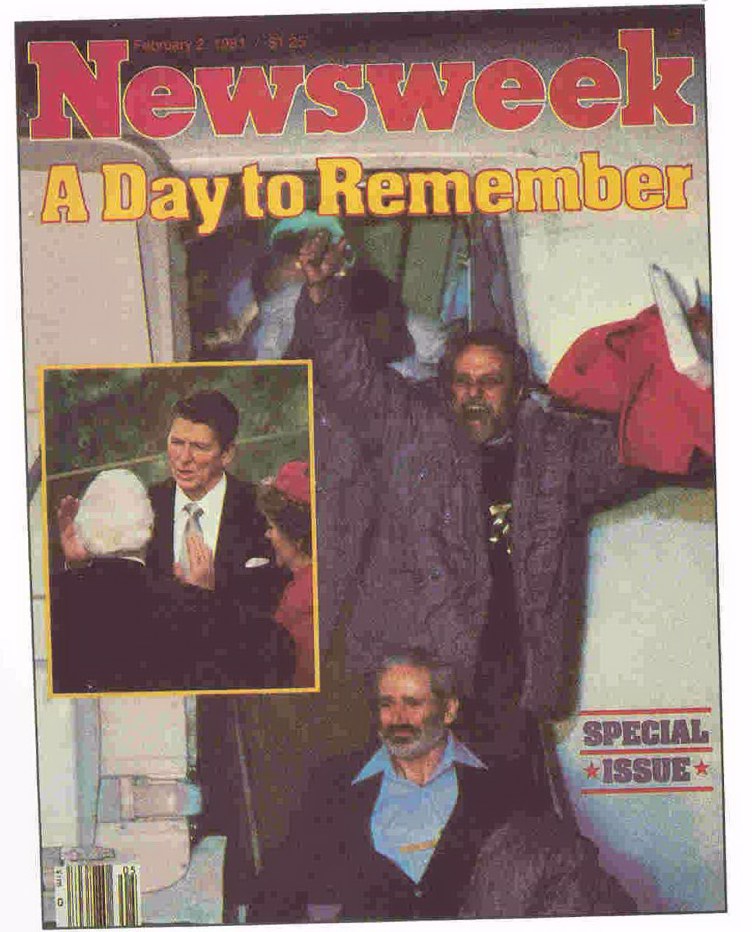
the Iranian hostages were released as Reagan began his presidency
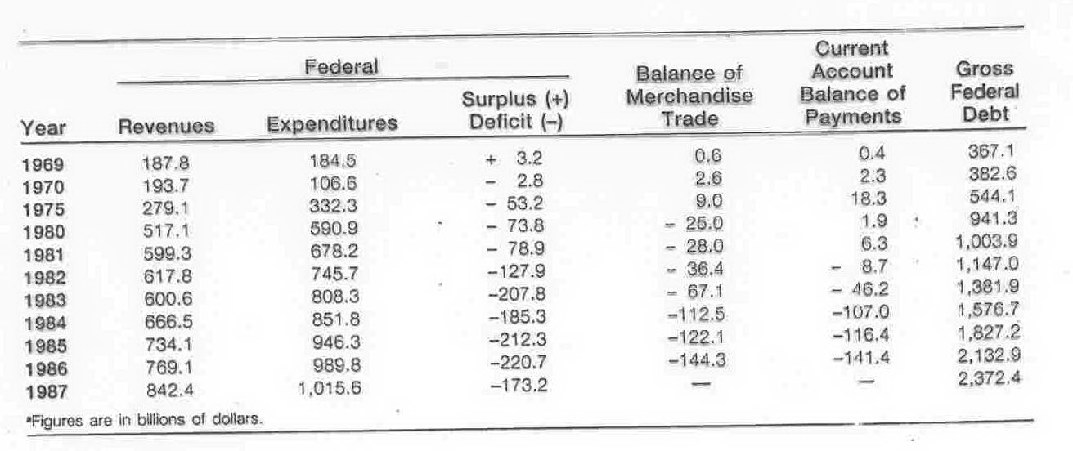
"Reaganomics" resulted in sharply increased federal deficits
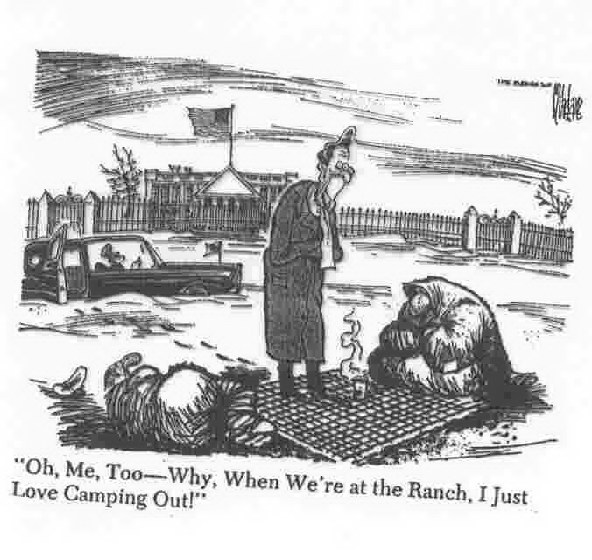
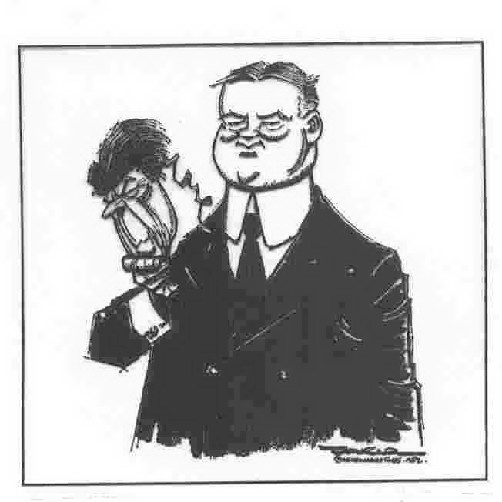
prior to the economic revival of the mid-80s, Reagan was accused of having damaged the social safety net and of being "another Hoover"
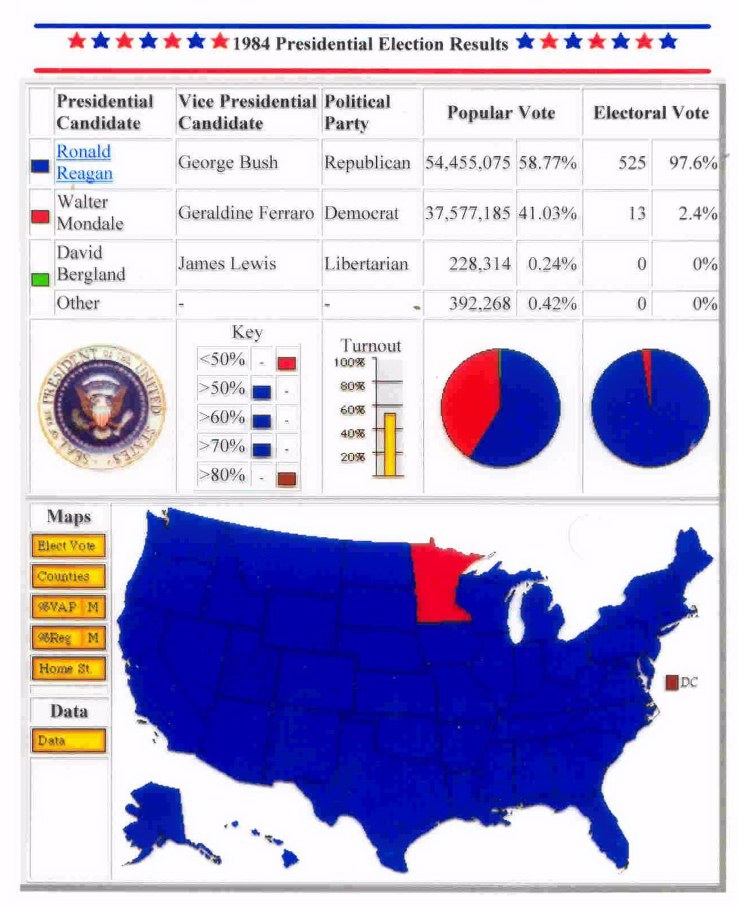

the 1984 election, and the county-by-county results (Mondale counties in red, Reagan counties in blue)
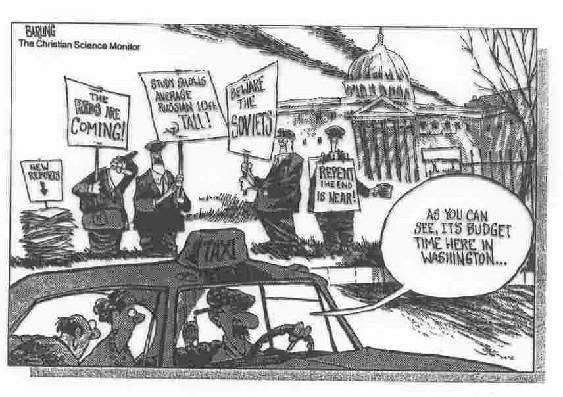
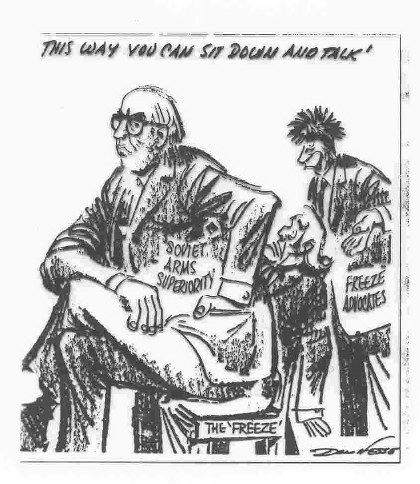
contrasting views of the scope of the Soviet military danger in the early 80s
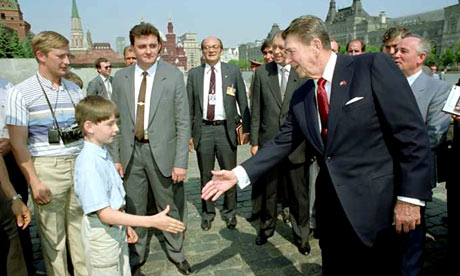
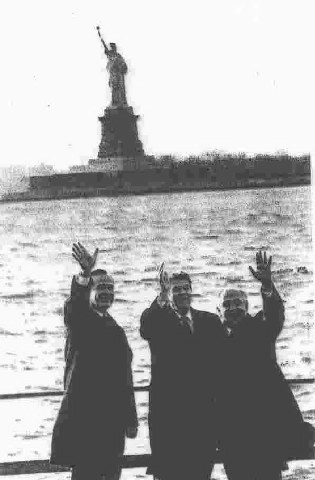
Reagan's and Gorbachev's friendly visits to each other's countries produced a feeling that the Cold War was ending
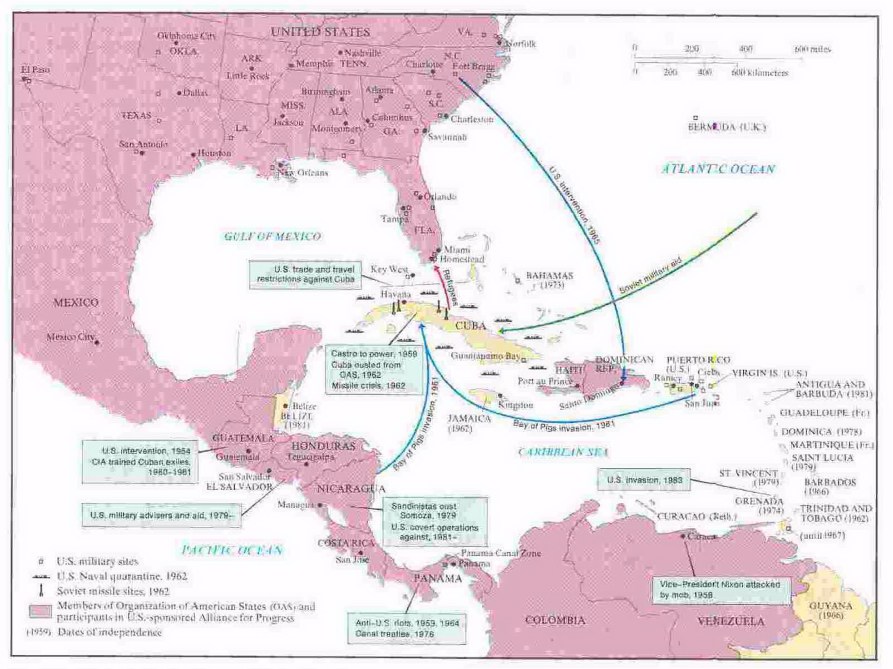
the Caribbean and Central America, the focus of much of Reagan's attention as president (Grenada and Nicaragua in particular)
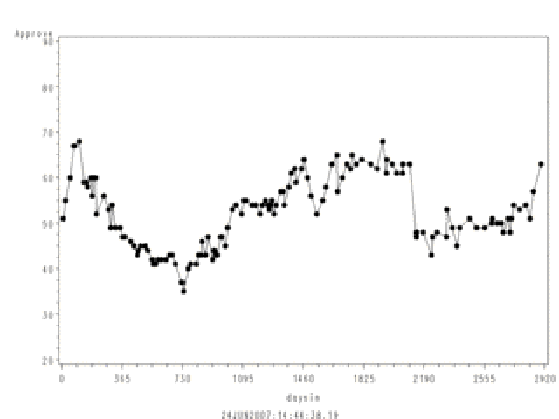
though Reagan's approval ratings were generally strong, he was damaged by the Iran-Contra revelations in his second term
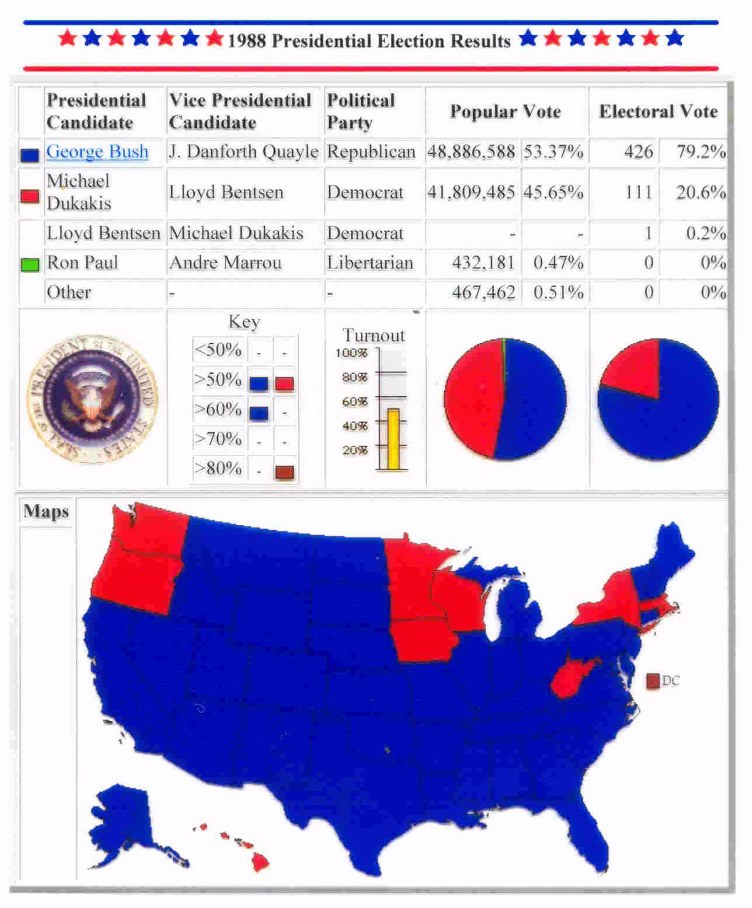
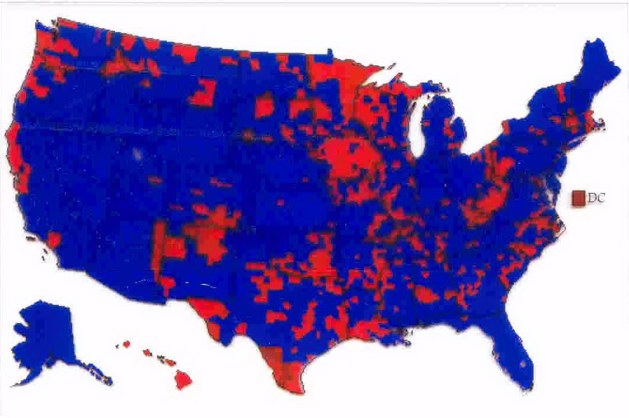
the 1988 election, and the county-by-county results (Dukakis counties in red, Bush counties in blue)
November 16:
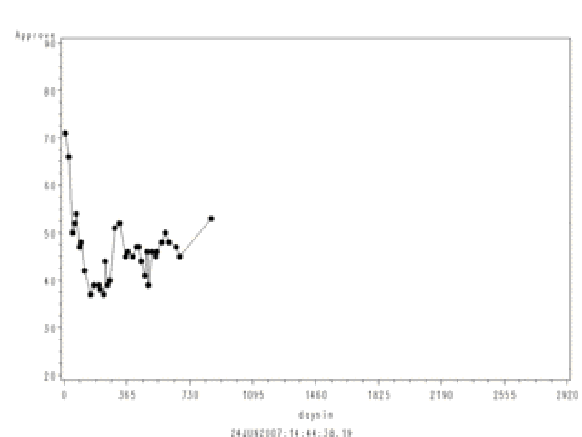
Ford's approval ratings declined sharply after his pardon of Nixon
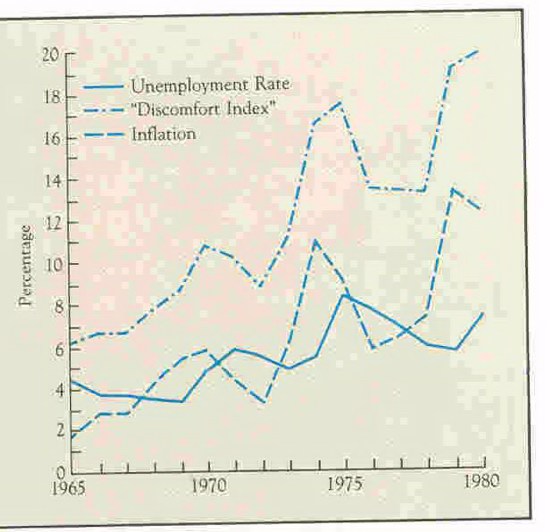
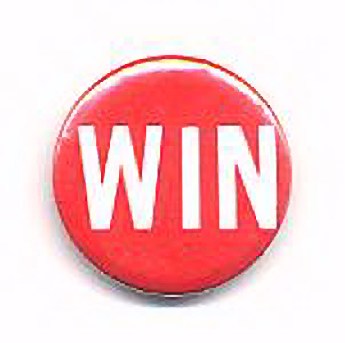
the "discomfort" or "misery" index of the 70s, and a WIN (Whip Inflation Now) button
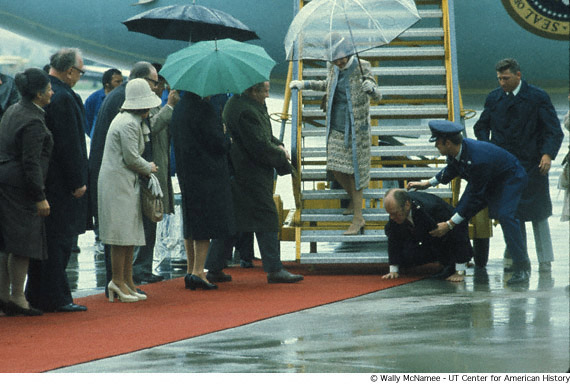
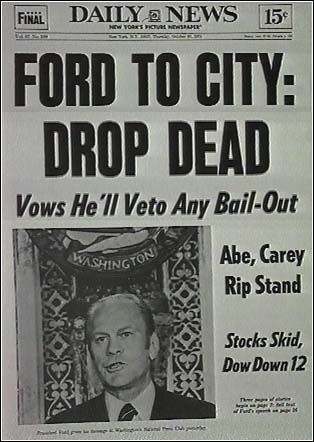
Ford's image problems-- a public stumble, and the "Drop Dead" newspaper headline
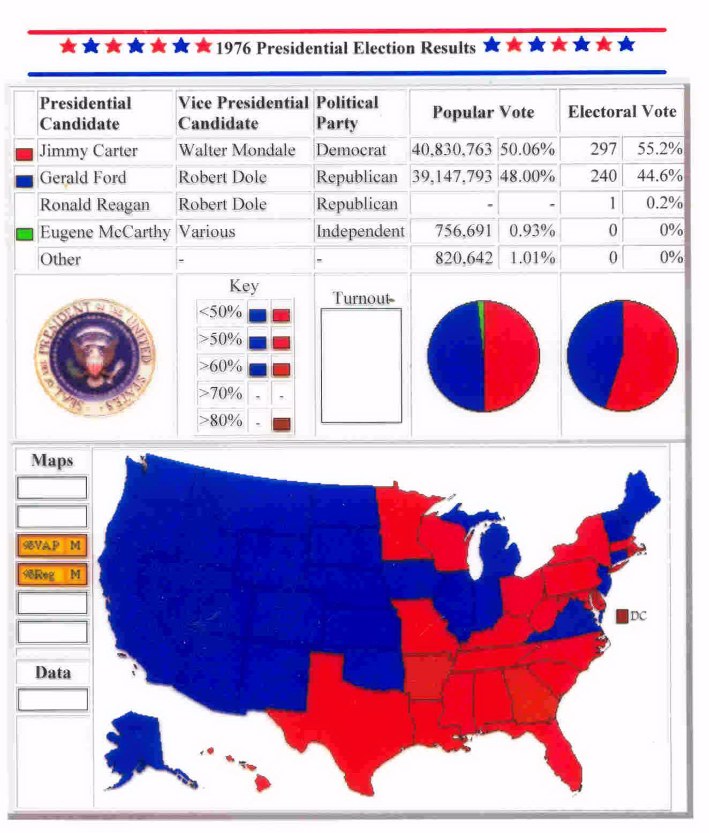
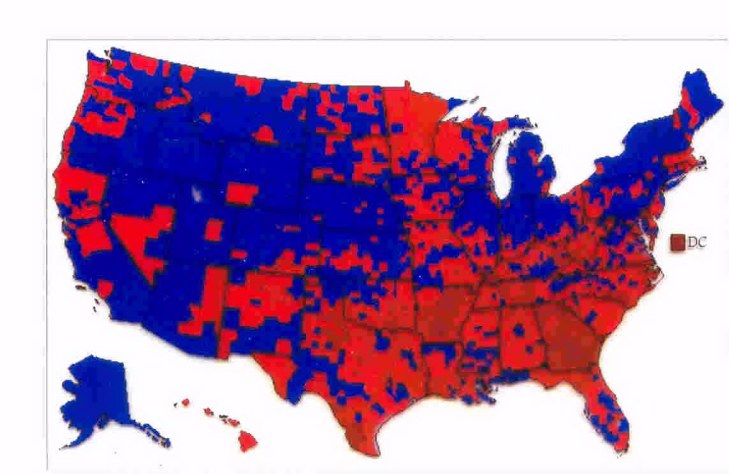
the 1976 election, and the county-by-county results (Carter counties in red, Ford counties in blue)
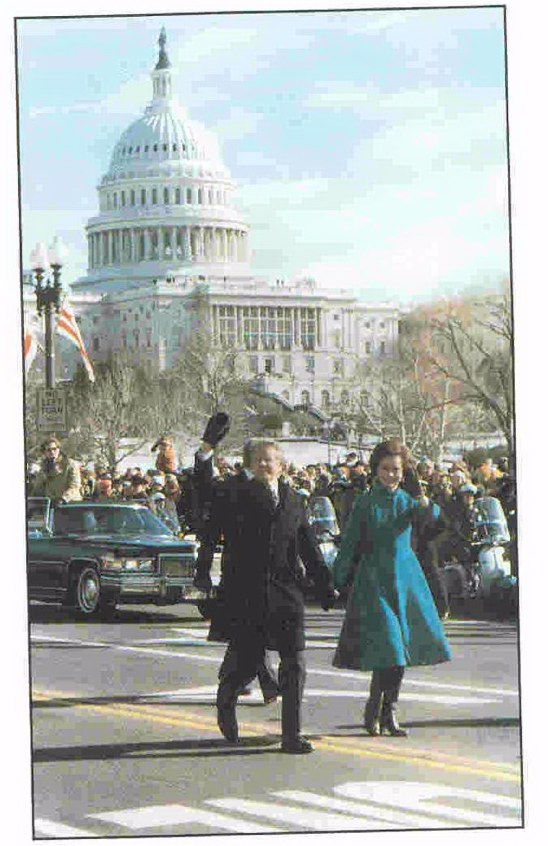
Carter's walk back to the White House after his swearing-in symbolized his determination for an open administration
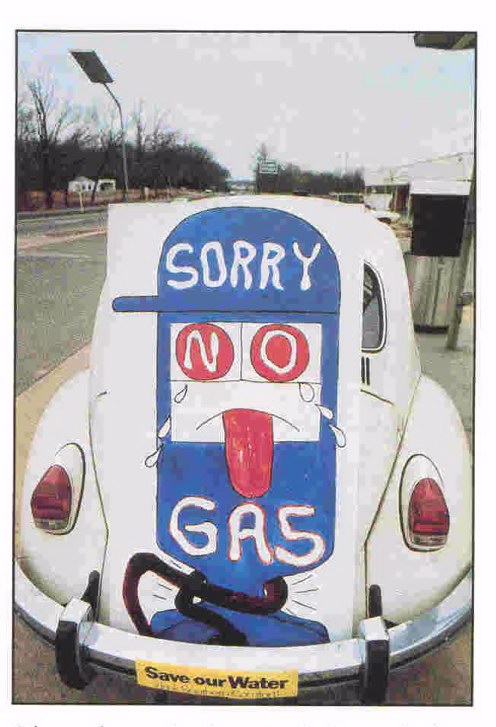

Events as varied as gasoline shortages and the "killer rabbit" episode cemented the perception that Carter's presidency was ineffective
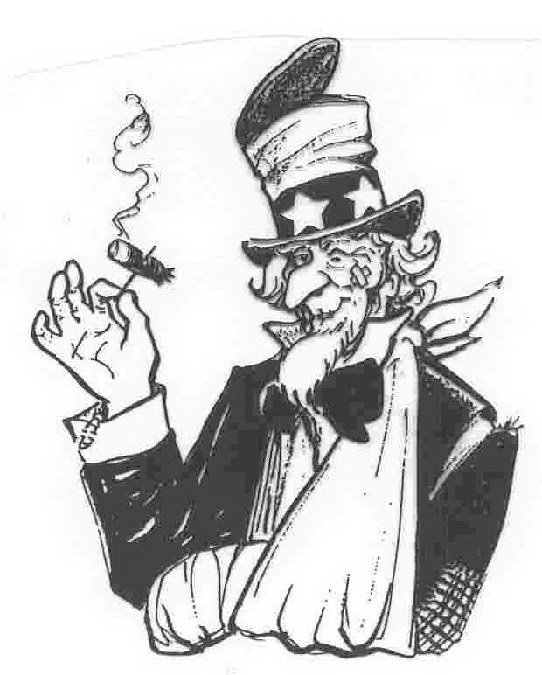
the feeling grew in the 70s that the US was no longer the dominant foreign policy nation
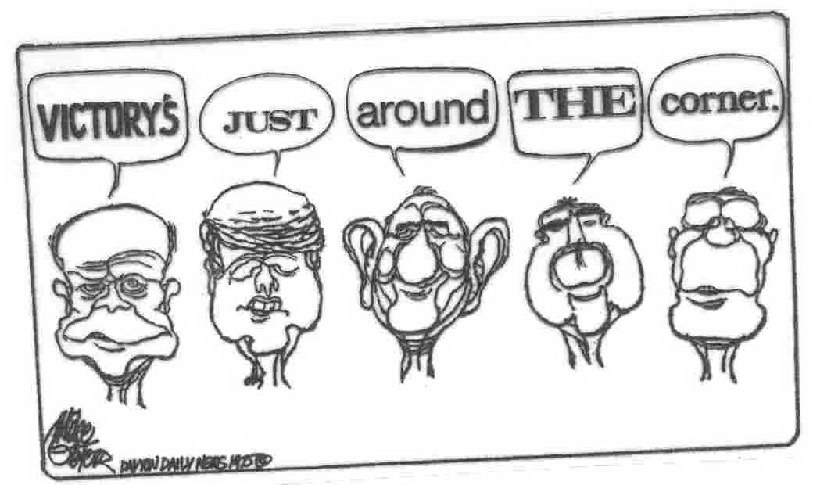
a bitter reaction to the fall of South Vietnam, 1975
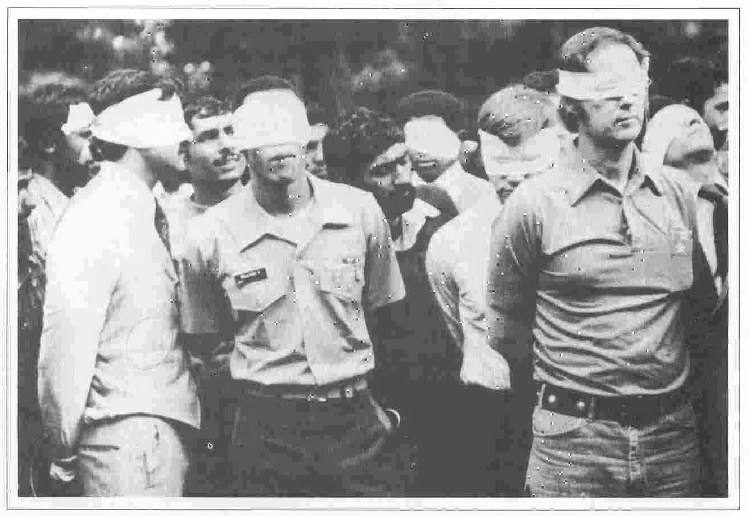
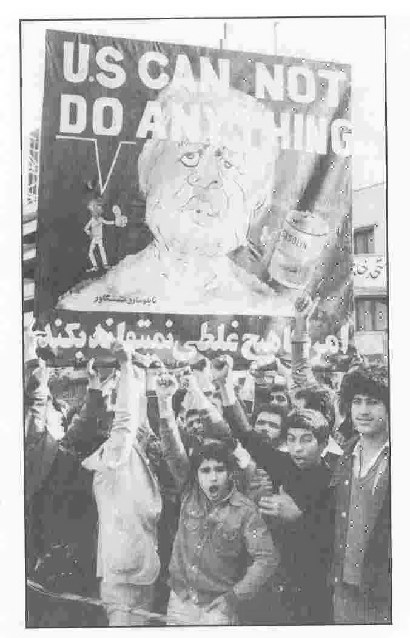
the Iranian hostage crisis (1979-1981) contributed to the perception of weakness in US foreign policy
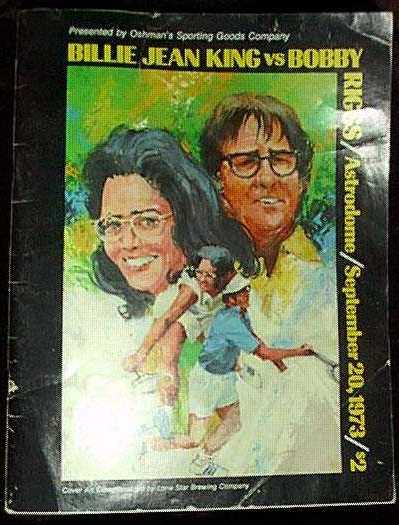

The King-Riggs exhibition tennis match (1973) led to changing public perceptions of women's place in society
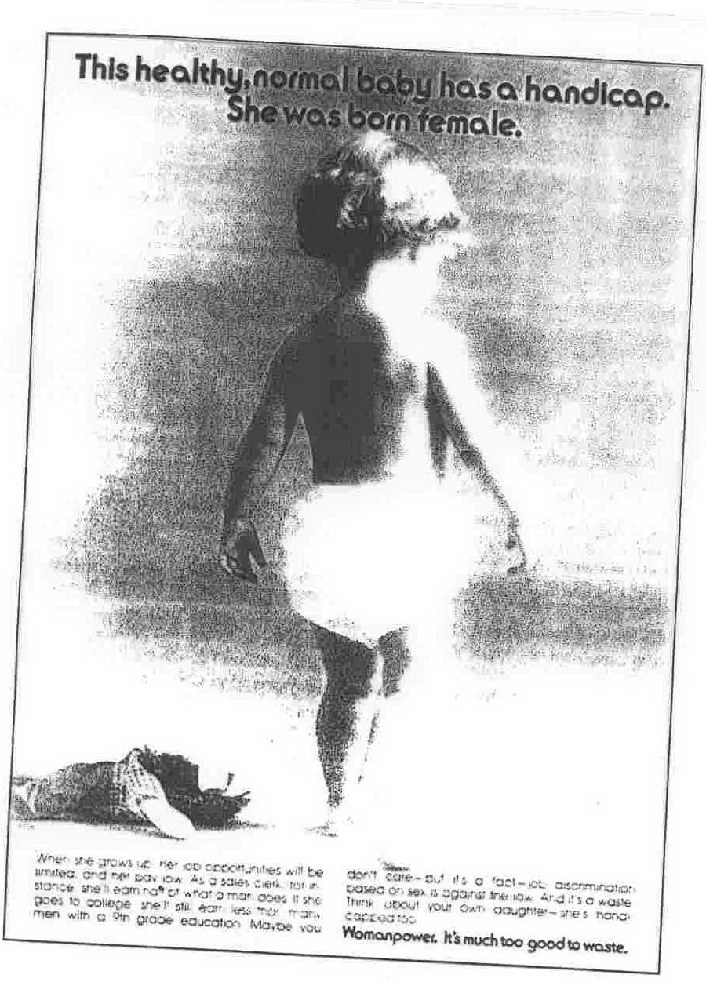
Women's groups emphasized the obstacles that remained even during the advances of the women's movement
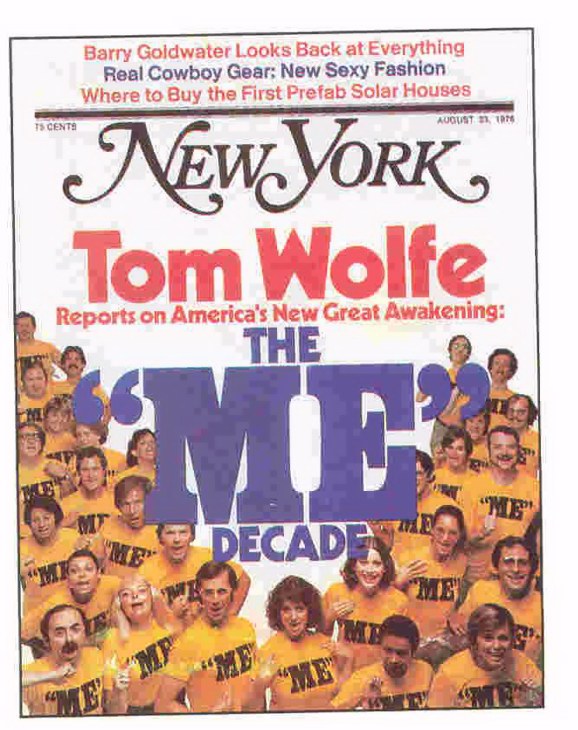
some wondered whether the entire 70s society was turning into the "me decade"
November 9:
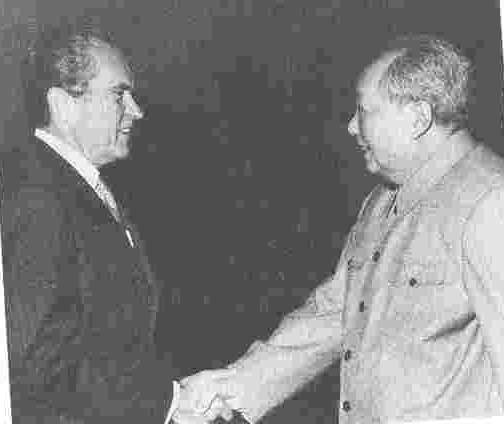

Nixon's 1972 trip to China produced trade agreements and increased popularity
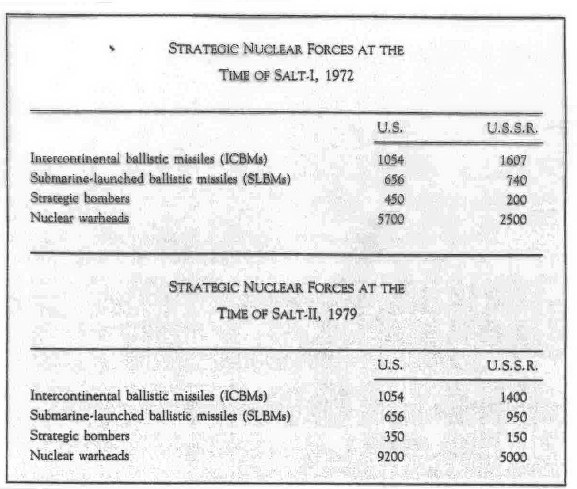
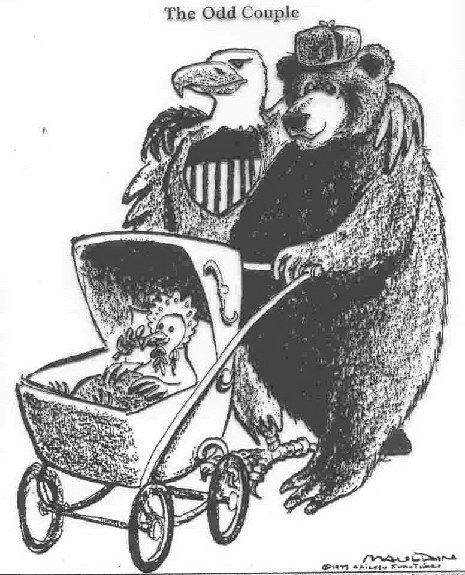
Nixon's 1972 trip to the Soviet Union produced an arms control deal and reduced Cold War tensions
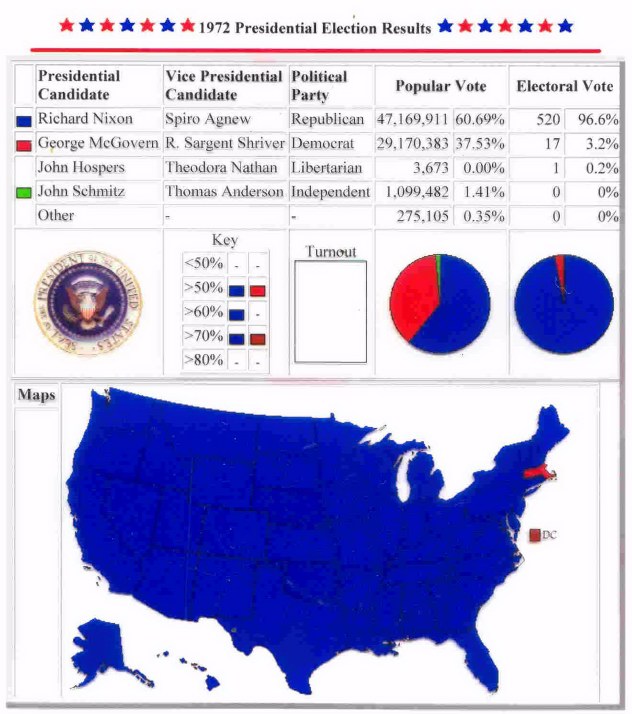
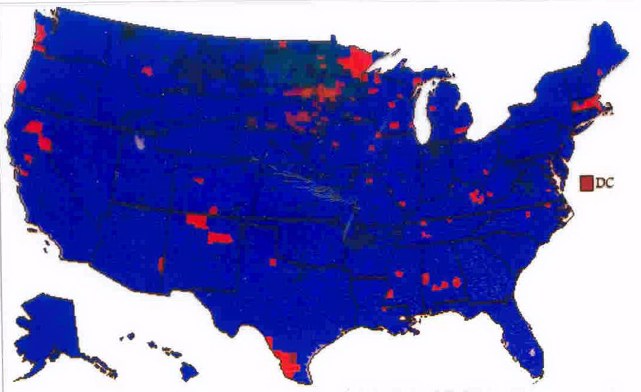
the 1972 election, and the county-by-county results (McGovern counties in red, Nixon counties in blue)
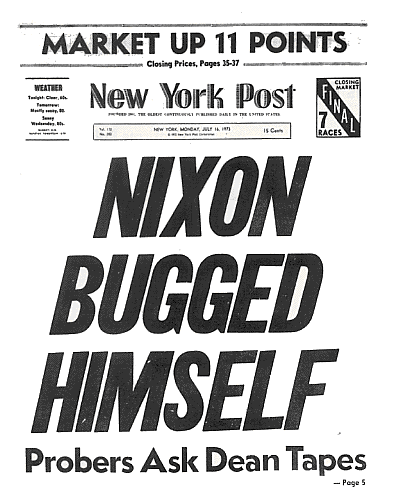
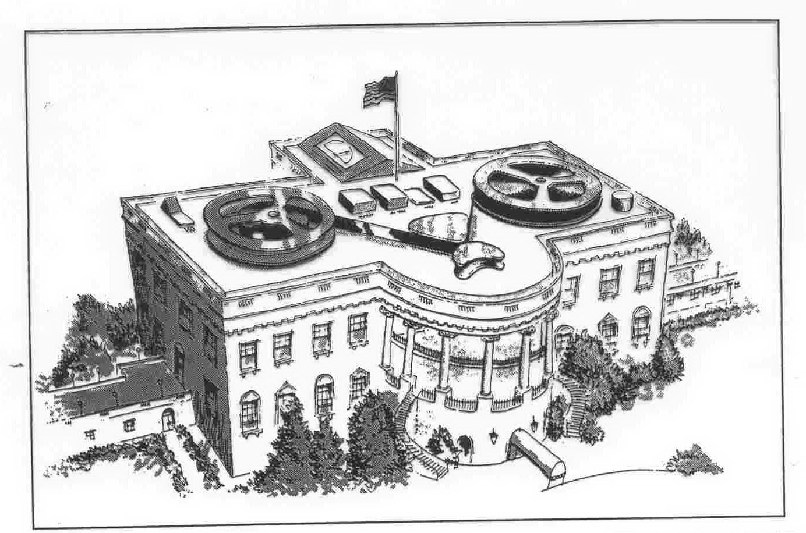
the focus of the Watergate investigation changed when it was revealed that Nixon had secretly recorded his White House conversations
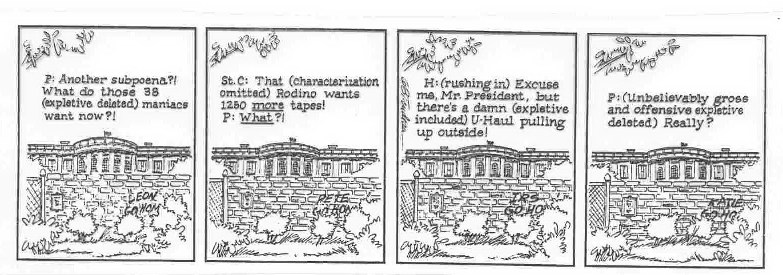
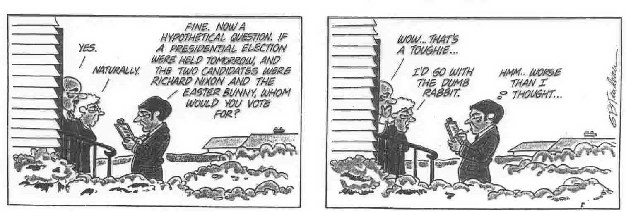
the release of edited transcripts of the Watergate conversations created more problems for Nixon, and his approval ratings declined even further
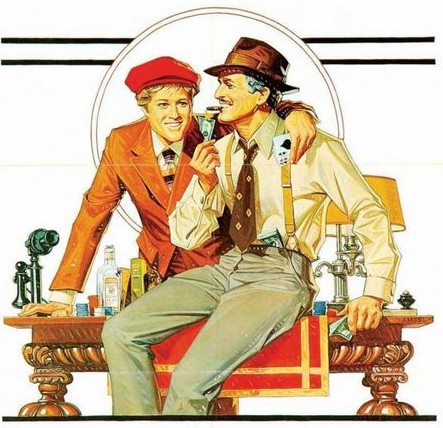
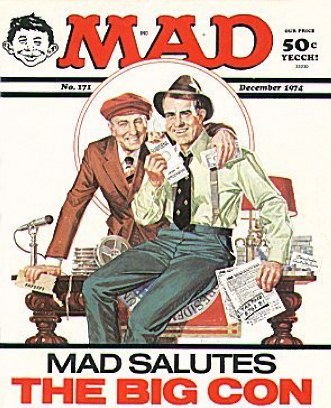
in a parody of images from The Sting, Mad Magazine portrayed Nixon and Agnew as con men
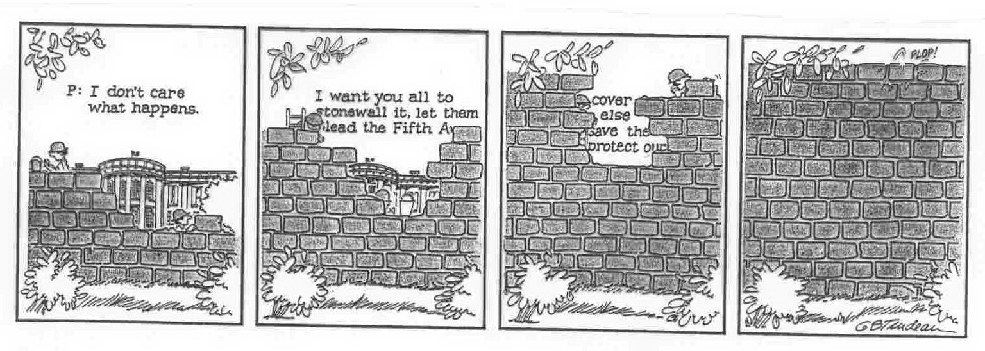
as the "smoking gun" transcript was released, Nixon appeared to have isolated himself from the public
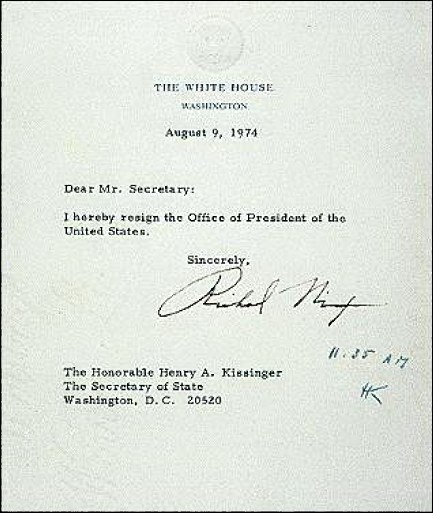
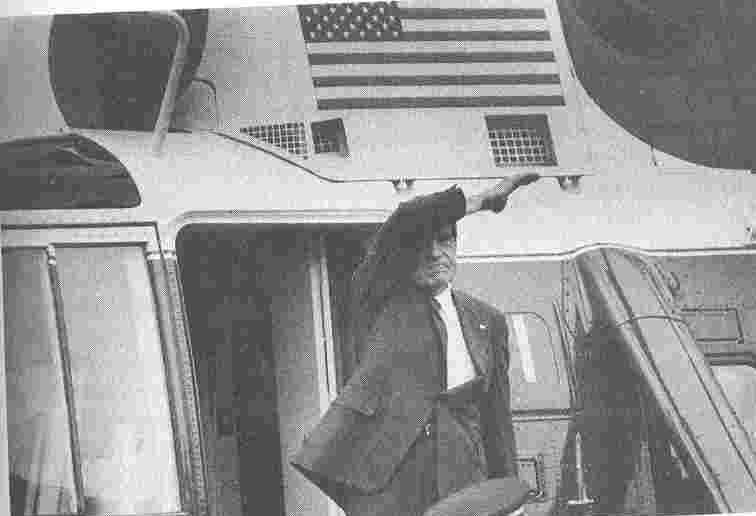
Nixon's resignation letter, and his White House farewell
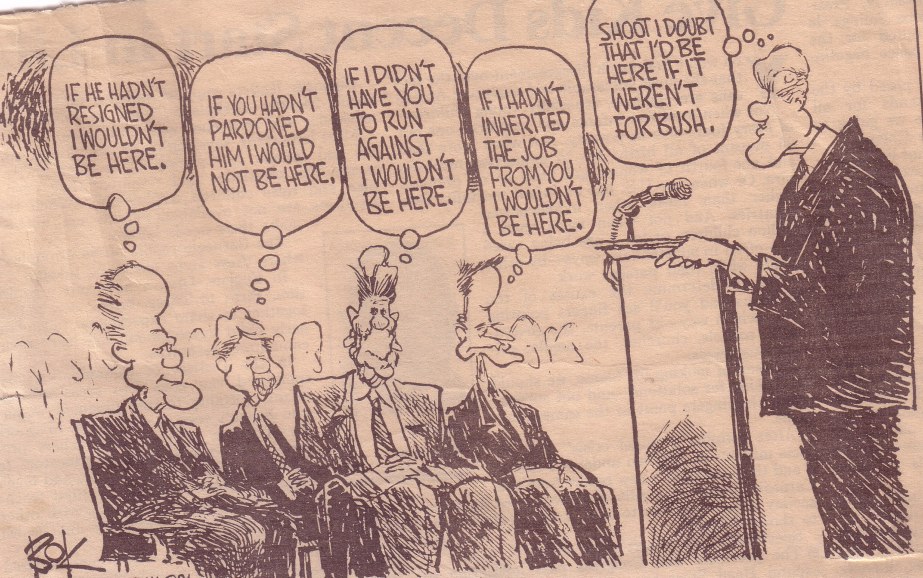
even after his resignation, Nixon continued to impact presidential politics
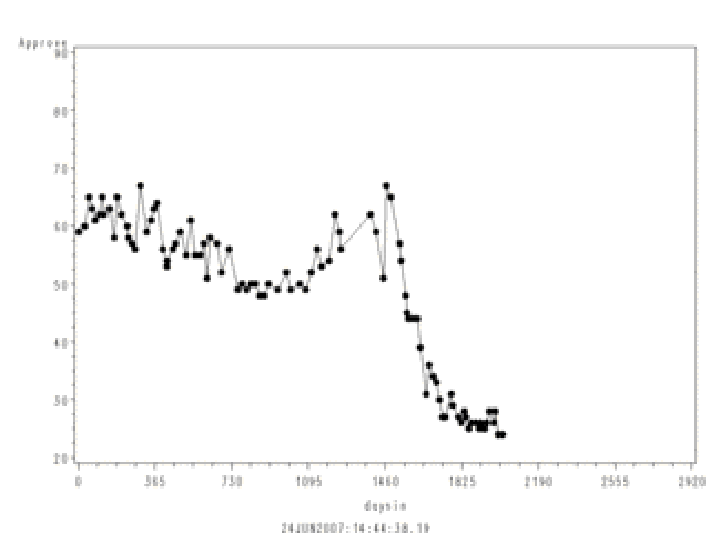
a graph of Nixon's approval ratings as president
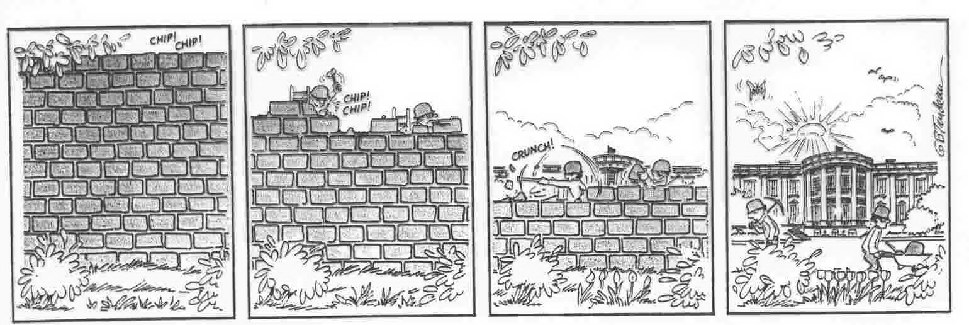
the first days of the Ford White House offered a "new day" compared with the end of the Nixon years
November 2:
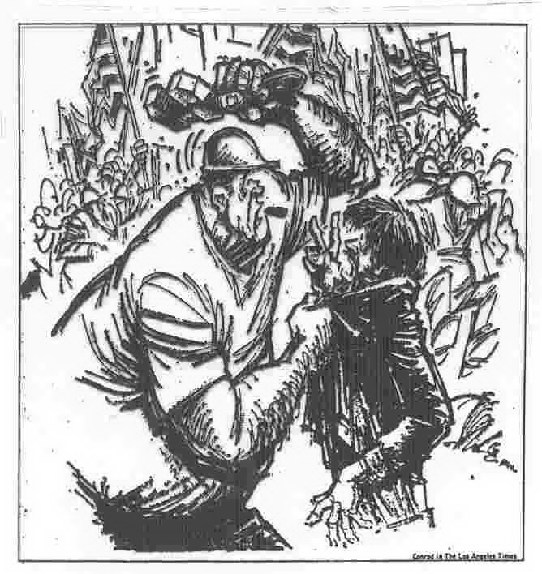
"Dad? Son?"-- polarization over the war split families
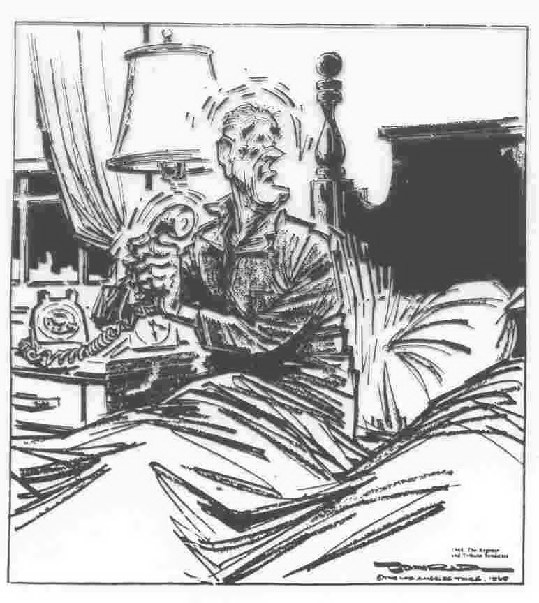
"What the hell's Ho Chi Minh doing answering our Saigon embassy phone?"-- the Tet Offensive brought LBJ's promise of "light at the end of the tunnel" into doubt
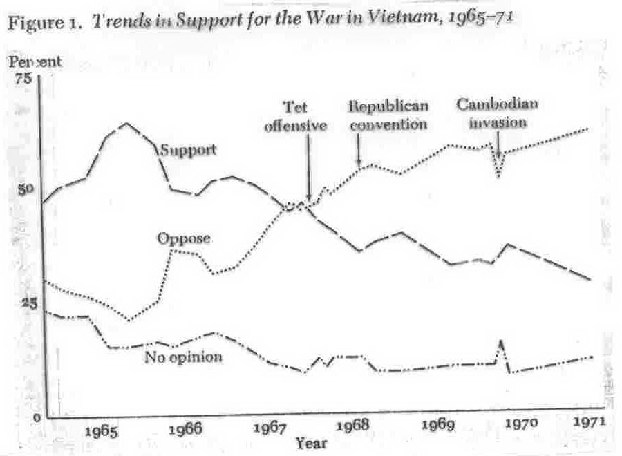
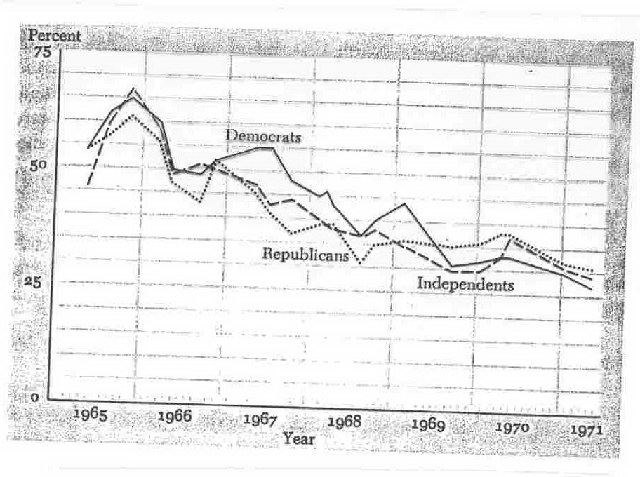
after the Tet Offensive, opponents of the war outnumbered supporters, and support for the war declined among all parties
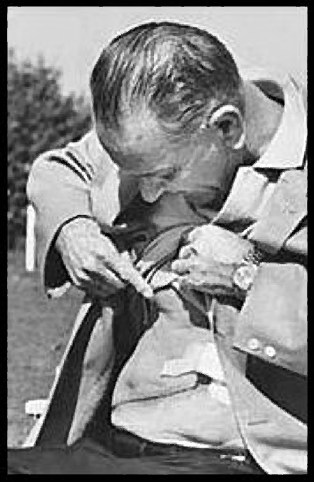
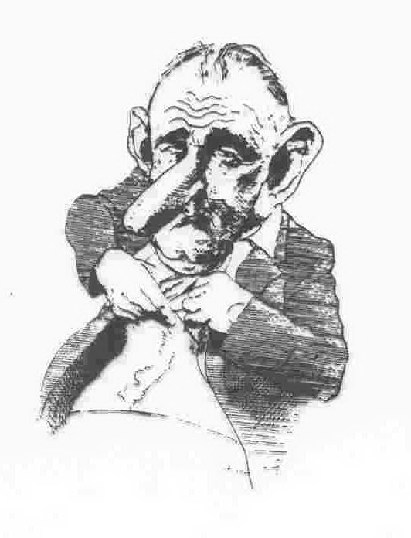
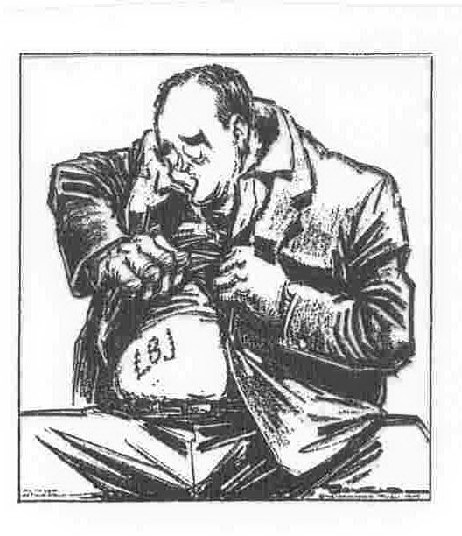
the original LBJ "scar" photo, and cartoonists' take on it (LBJ's scar was Vietnam, Humphrey's was LBJ himself)
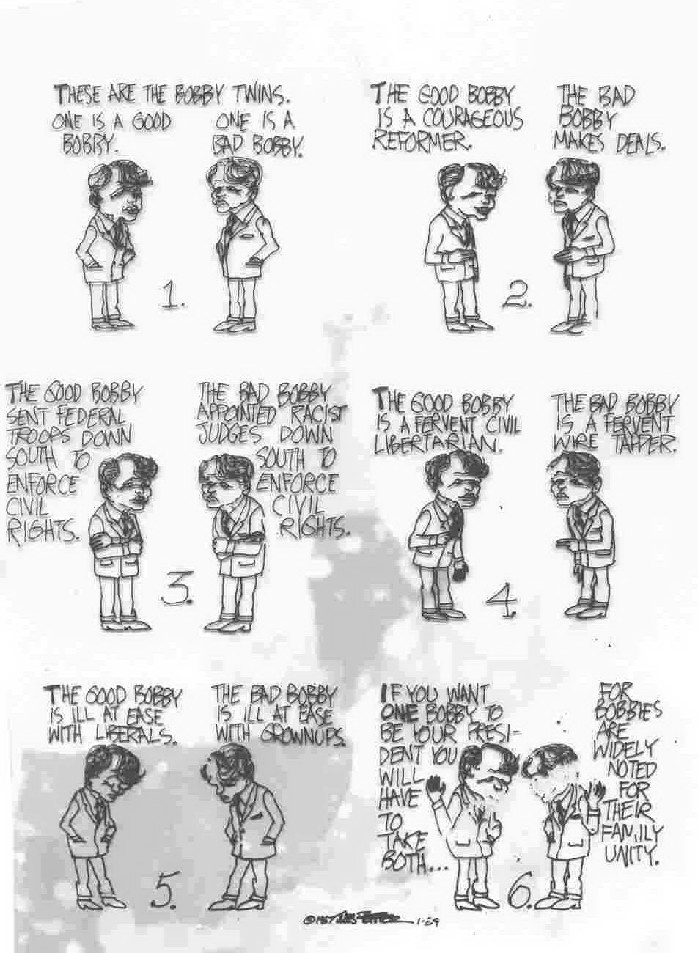
"Good Bobby/ Bad Bobby"-- Robert Kennedy's entry into the 1968 campaign highlighted the dual nature of his appeal
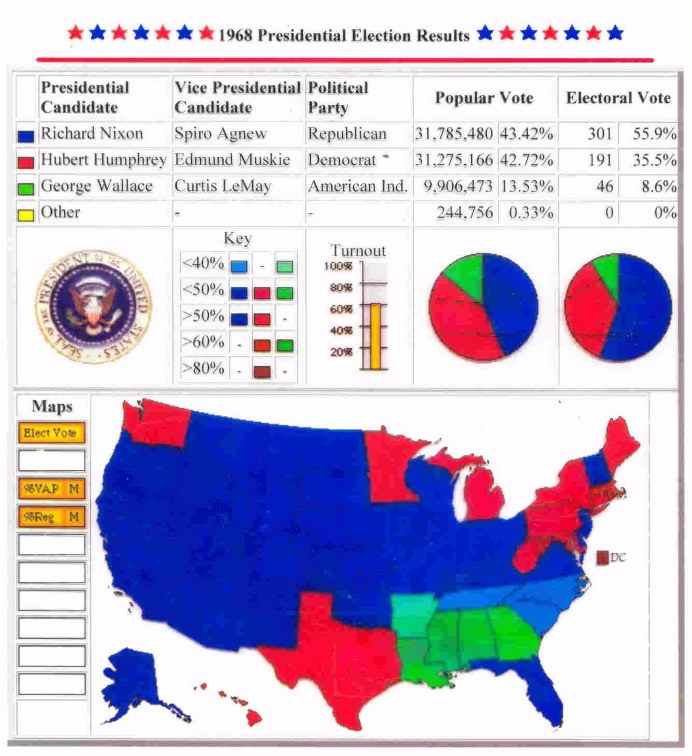
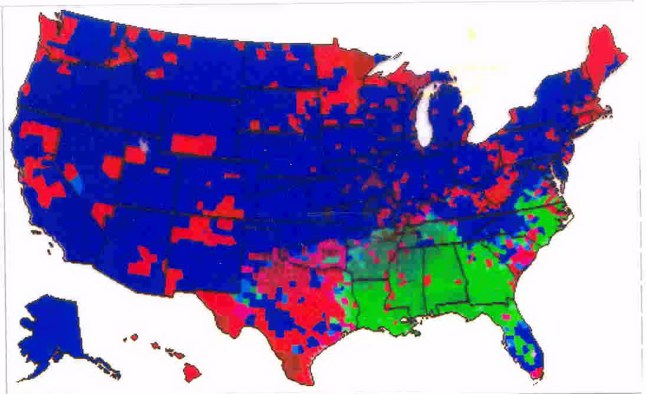
the 1968 election, and the county-by-county results (Humphrey counties in red, Nixon counties in blue, and Wallace counties in green)

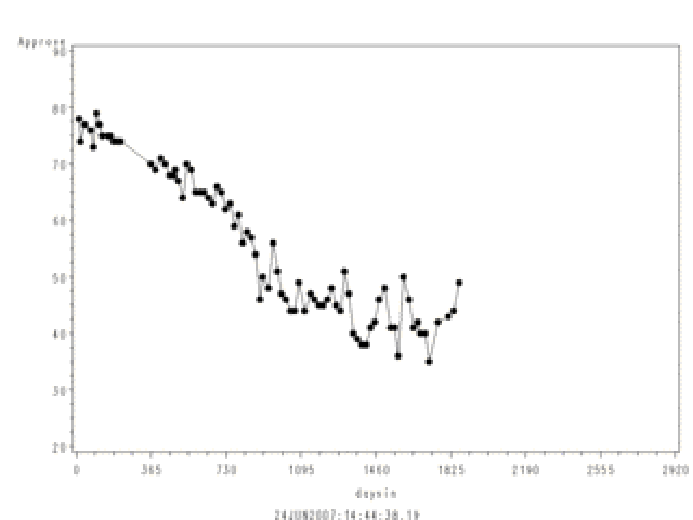
Historians' ranking of presidents by foreign policy (from a 2000 survey) shows the major weakness of Johnson's legacy, while the chart shows the overall course of his public opinion approval ratings
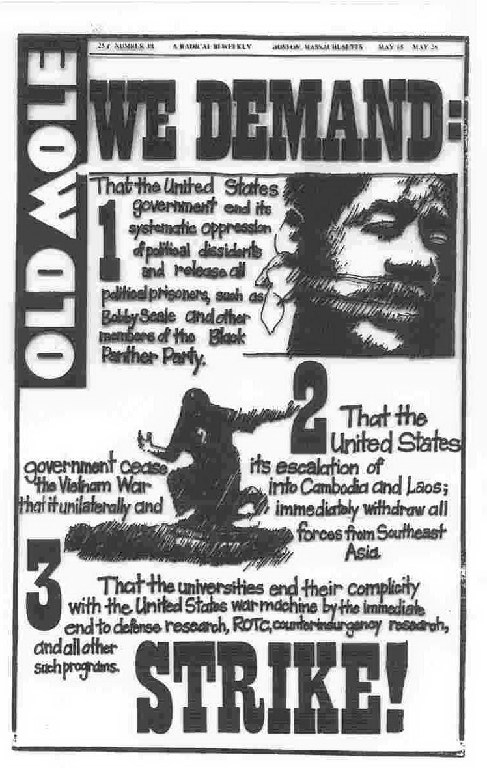
Nixon's invasion of Cambodia (1970) revived student and anti-war activism
October 26:
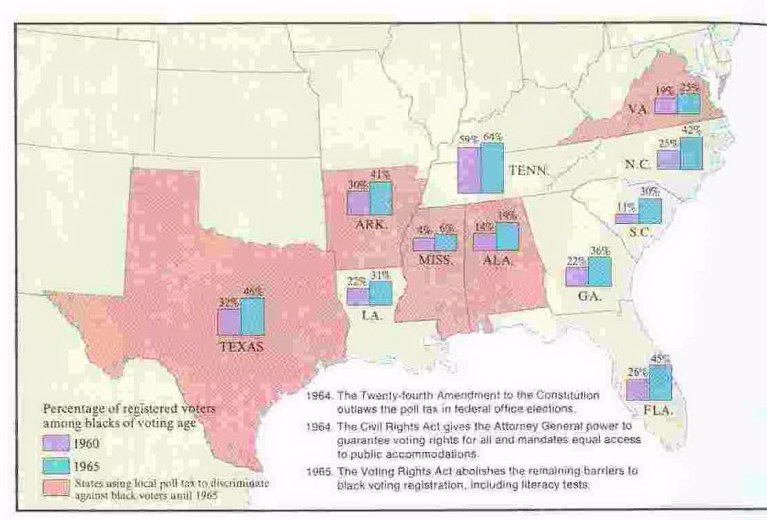
the Voting Rights Act (1965) gave federal guarantees to protect African-American voting rights in the South
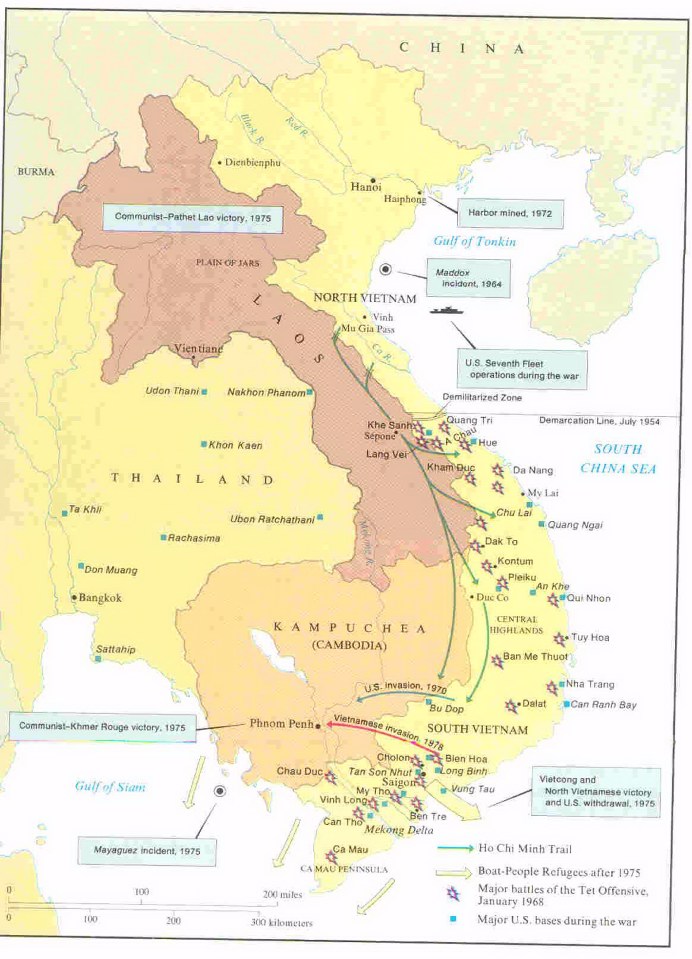
Southeast Asia
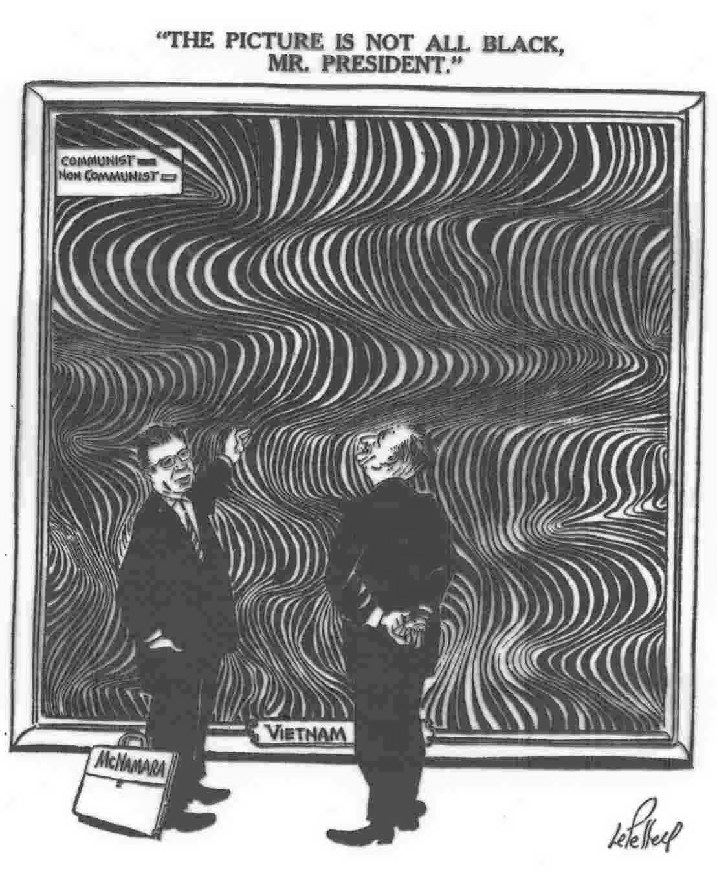
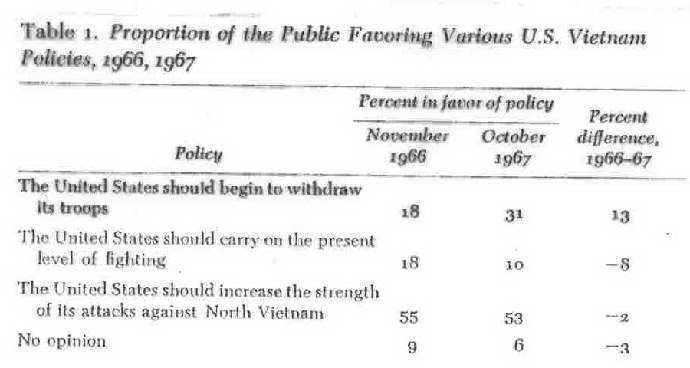
despite the difficulty of determining territorial control of Vietnam's population, a majority of the American public remained supportive of the war at the end of 1967, but dissents were growing
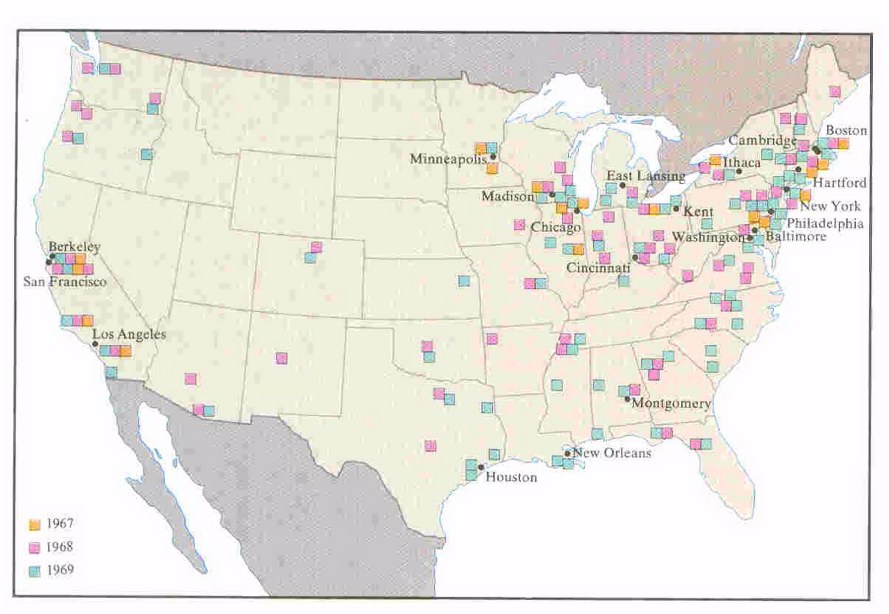
locations of major anti-war rallies in the mid- and late 60s
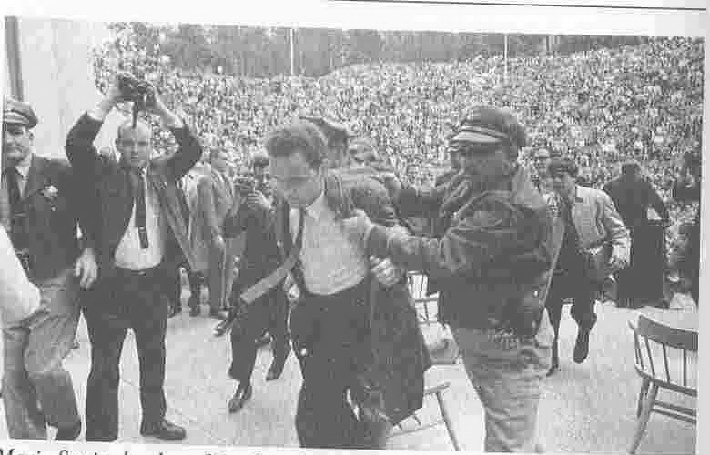
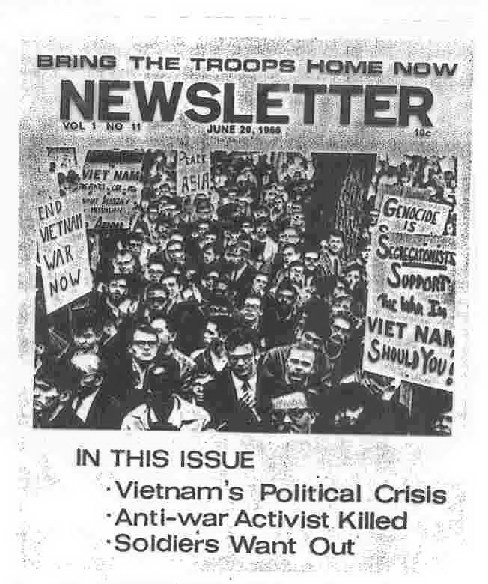
student activism evolved from actions such as the Free Speech Movement into anti-war demonstrations
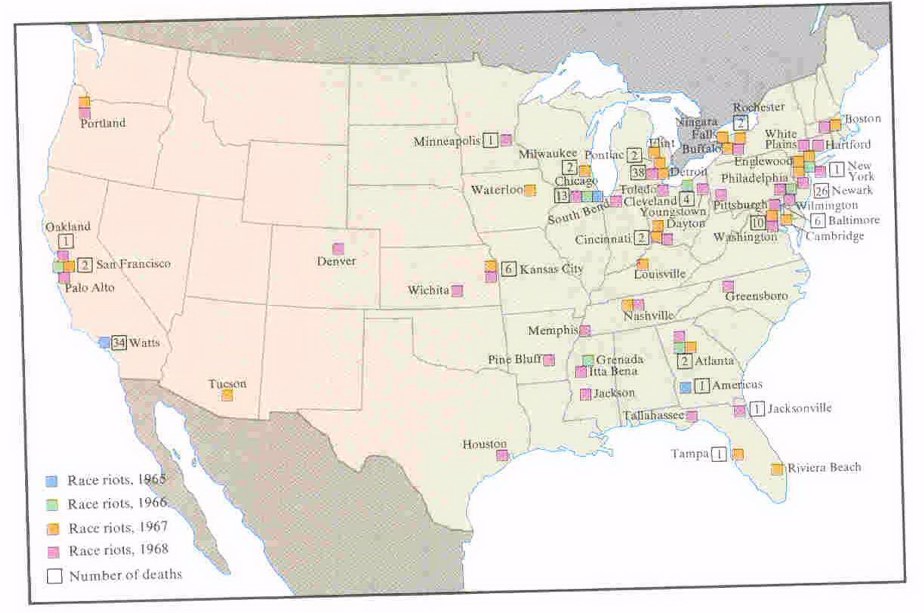
the "long hot summers"-- locations of urban rioting in the mid-60s
October 19:
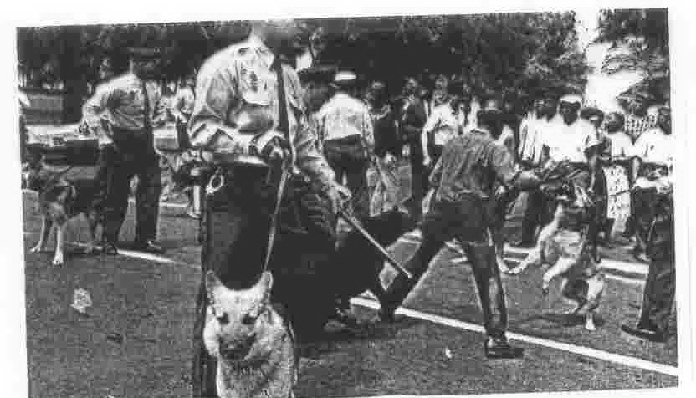
police actions against protestors in Birmingham helped to raise public support for civil rights

Bill Mauldin's famous cartoon depicting national mourning after Kennedy's assasination, November 1963
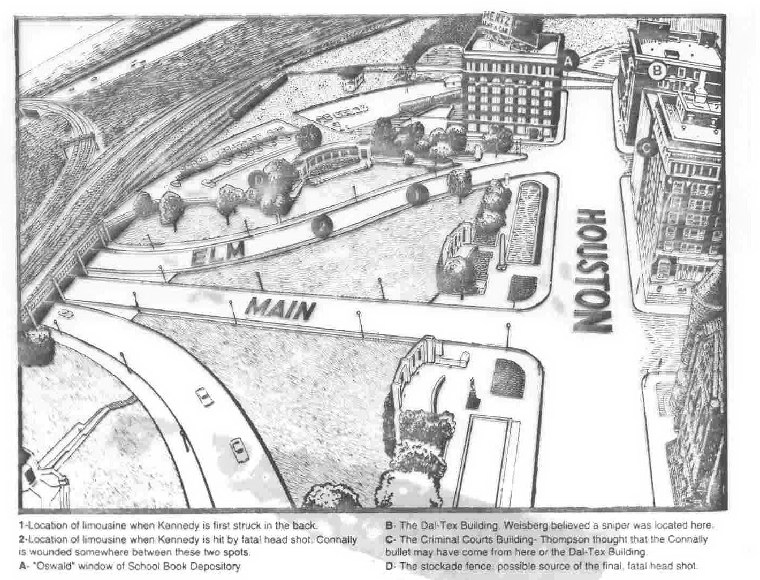
the scene of Kennedy's assasination in Dallas
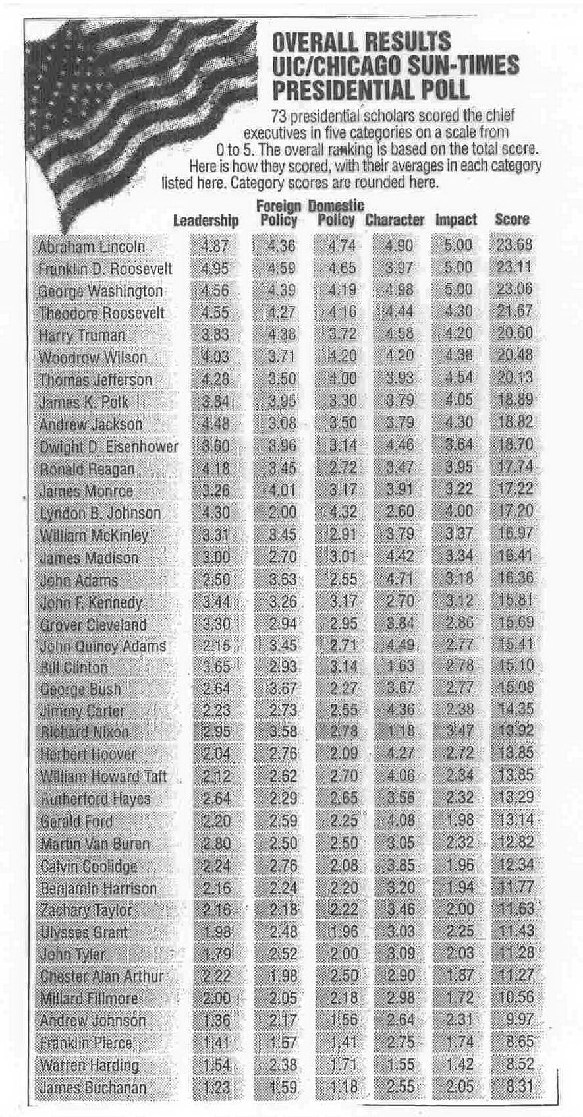
a 2000 presidential historian survey of Kennedy's ranking among presidents (a recent survey has Kennedy considerably higher)
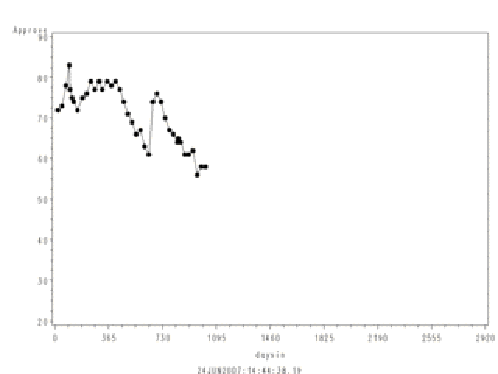
a graph of JFK's approval ratings as president
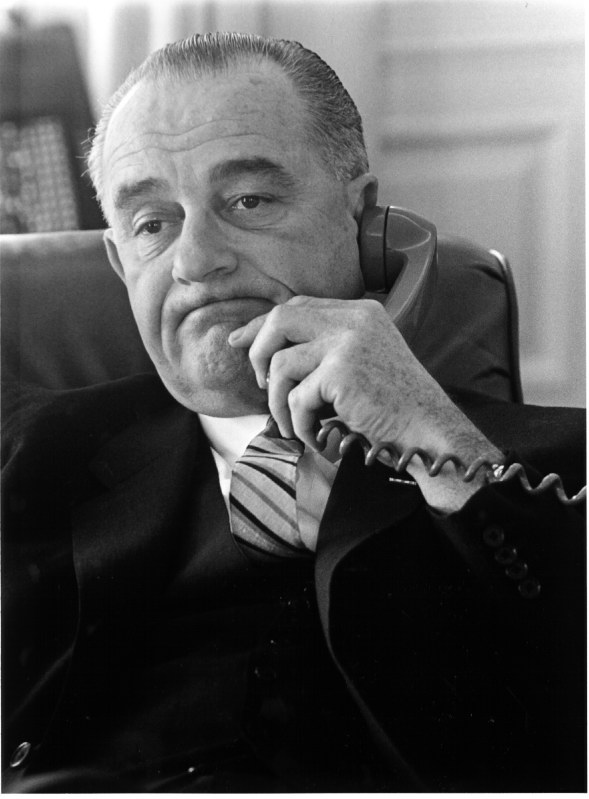
Lyndon Johnson on the phone, possibly sweet-talking or strong-arming a reluctant senator
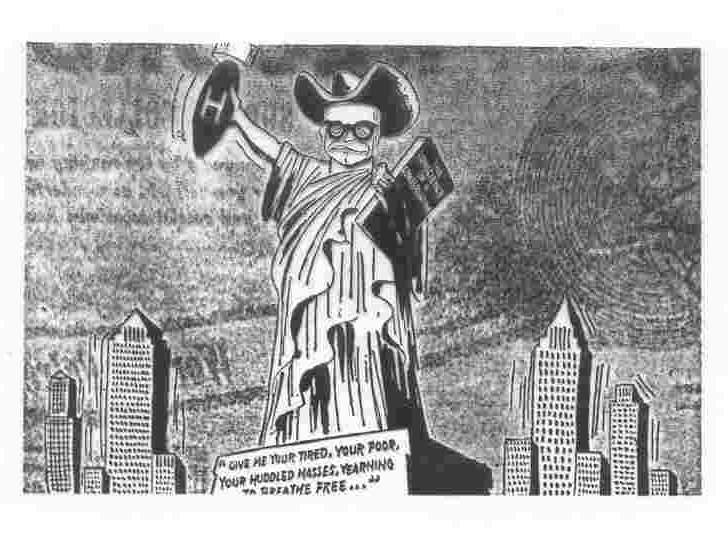
the popular image of Barry Goldwater, LBJ's 1964 opponent, as a dangerous extremist
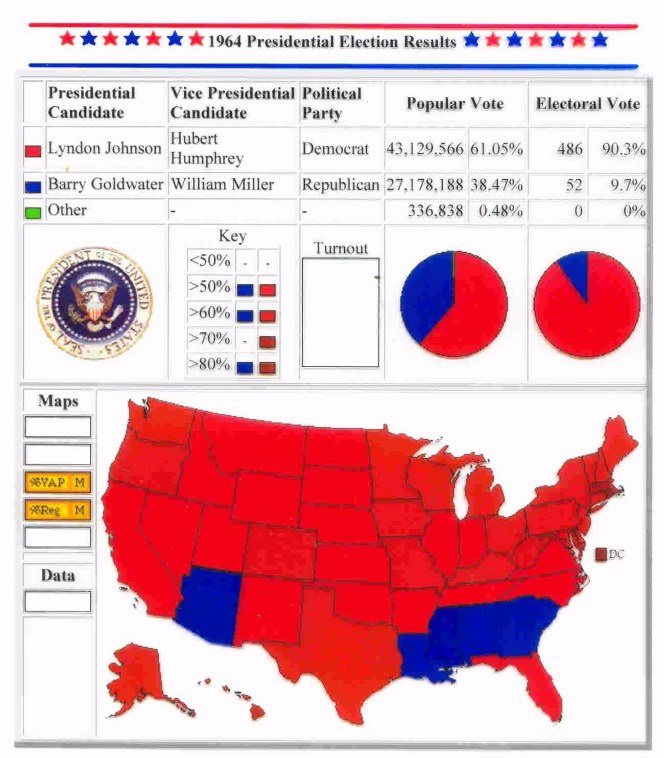

the 1964 election, and the county-by-county results (Johnson counties in red, Goldwater counties in blue)